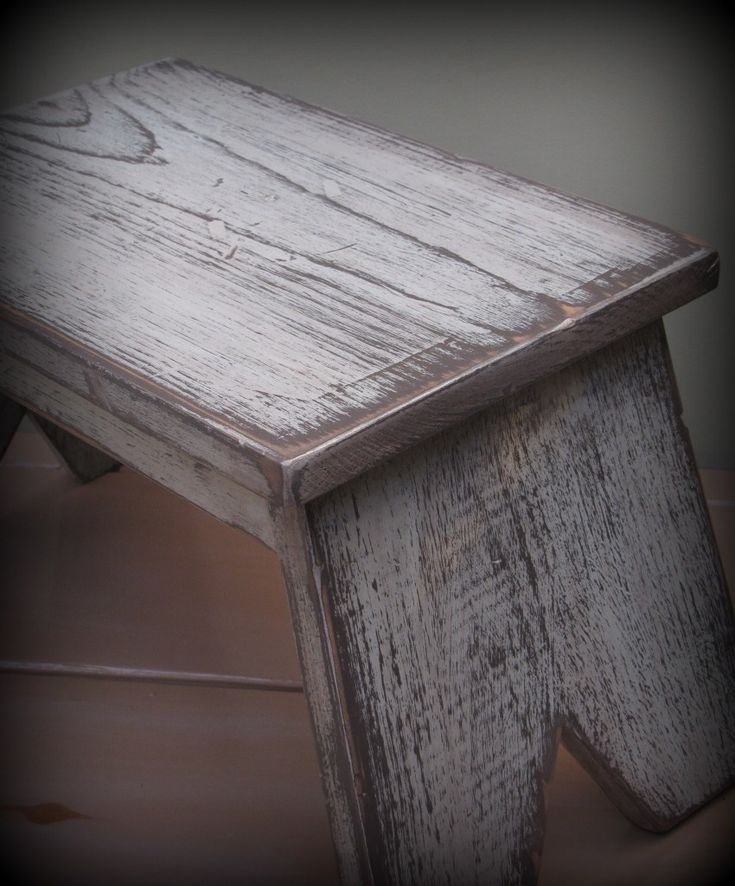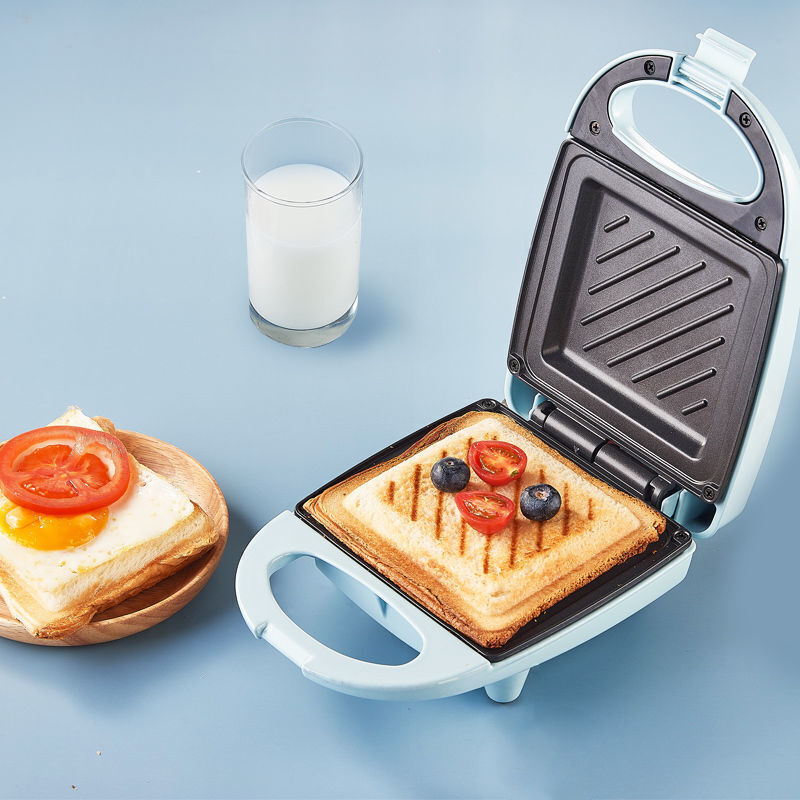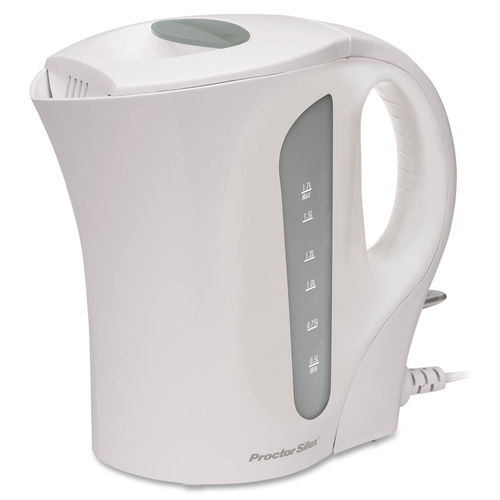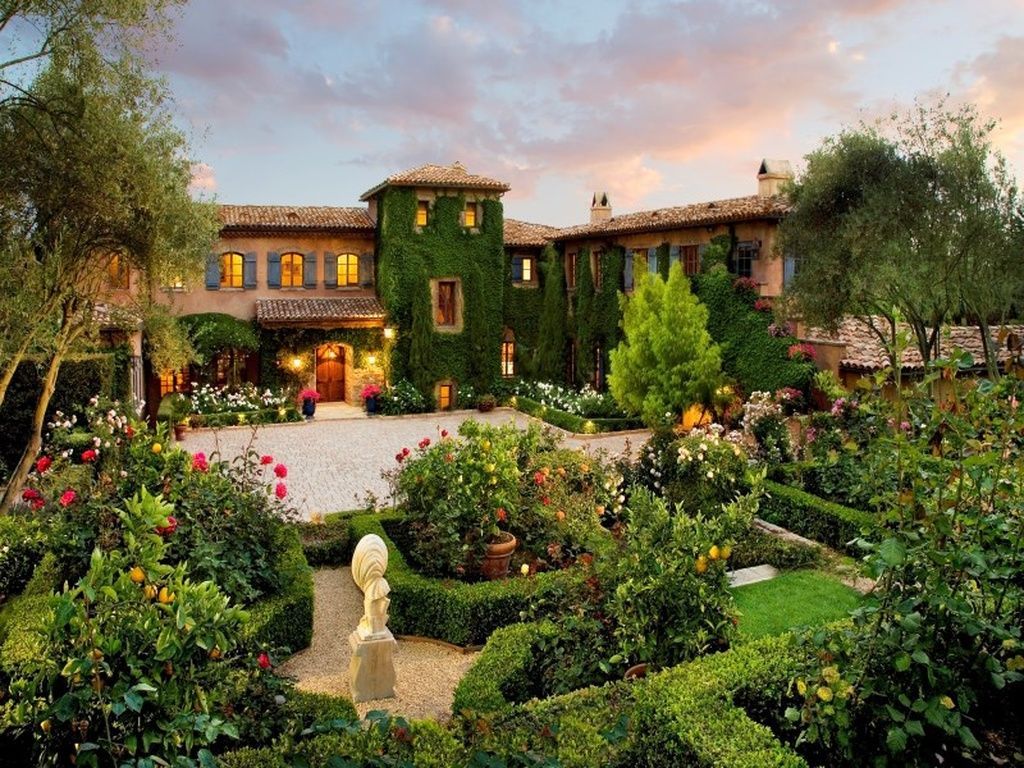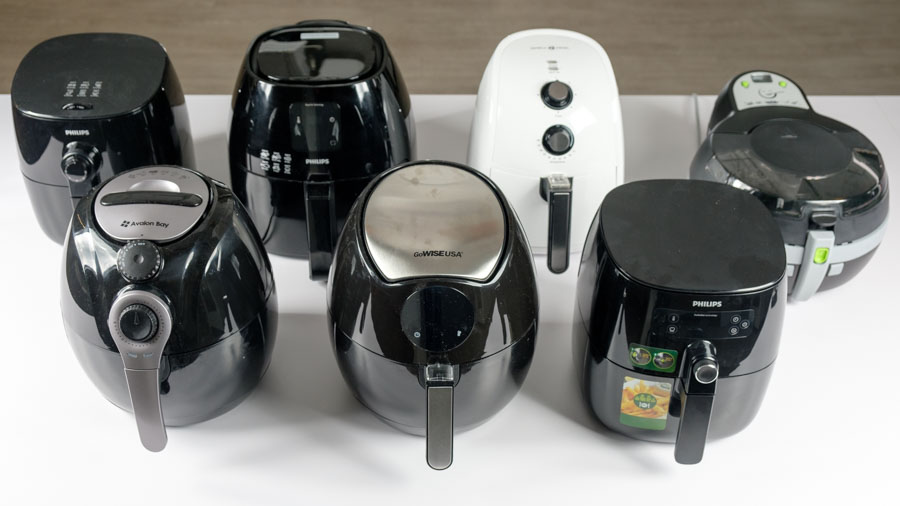Finishing painted wood furniture
How to Get a Smooth Professional Paint Finish on Furniture
Learn how to get a smooth paint finish to give your DIY projects a professional look.
Building a new piece of furniture is just one part of the process. You also have to finish your piece. For painted furniture, follow these steps to get a smooth paint finish on your project.
I used these furniture painting steps on the DIY double vanity in our master bathroom. The paint finish turned out amazing! It took the project from DIY to professional.
We have had the vanity in our master bathroom for a couple weeks now, and everyone that comes to visit must go check it out. It has been really awesome to see their reactions. I have heard “You really built this?” and “It looks professional not homemade.”
As much as I want to believe the comments are all about my skills with power tools, I know that the finish on the vanity is what is making people really impressed.
I hate to admit that some of my early building projects didn’t turn out as high-end looking as the bathroom vanity. Even my coffee bar table (which I still absolutely adore) is not as professional as the vanity.
But I have been learning a lot by trial and error over the last few years and I want to share this knowledge with you so you know how to get a smooth professional paint finish on furniture you build too.
Pick the Best Materials for Your Project
Before we get into how to paint the furniture for a smooth finish, I want to take a minute to talk about things that need to be done in the building process to make the painting step much easier!
I hate sanding and I hate painting! But I do it because no one will do it for me and I want to actually be able to use the pieces I build.
So I always take a little extra time in the building to cut down on time spent finishing a piece, starting with the wood I choose. I know it is tempting to make pieces of furniture out of cheap 1x2s and 1x4s, and they definitely have a place in my wood shop.
In the beginning, I used them frequently so it didn’t cost a lot when I messed up..jpg) I built a toddler bed for less than $25 and this nautical picnic table for less than $50 because I used these inexpensive building materials.
I built a toddler bed for less than $25 and this nautical picnic table for less than $50 because I used these inexpensive building materials.
But these woods are soft and will not hold up over time. So when I build with them I know that they will be pieces that are used for just a few years.
However, using a harder wood will give you a more solid piece that will last for many, many year and the hardwood is much easier to achieve a smooth professional finish on.
Budget Friendly Hardwoods to Build With
Using hardwood can get expensive, but there are more budget friendly options like knotty alder and poplar.
Alder and Knotty Alder
I used knotty alder to make these rustic railings, this dining room hutch, and the double bathroom vanity (and all the supplies for our 8′ double vanity cost less than $350).
It is really easy to work with, but be warned, there are quite a few knots in it. I personally love the knots because my house is full of rustic charm.
If you do not want the knots, use regular alder (which is a bit more expensive but not as expensive as other hardwoods). Or you can fill the knots with epoxy or wood filler before painting.
Poplar
Poplar is a great option for painted furniture. It can have some uneven or greenish tones so if you are not painting, make sure to carefully pick out your boards to match.
I used poplar for all the cabinet doors and face frames in our kitchen remodel and for this mudroom storage locker. I also for this stained TV stand.
Poplar is easy to work with and has no knots.
Select Pine
Another option for a great painted wood on a budget is select pine. It is more expensive than construction lumber or whitewood, but not as expensive as hardwood.
The pine lumber is easy to work with and takes paint beautifully. I used it to for these small console table build plans.
The finish on this console was made to look chippy by adding petroleum jelly to the edges before applying the paint.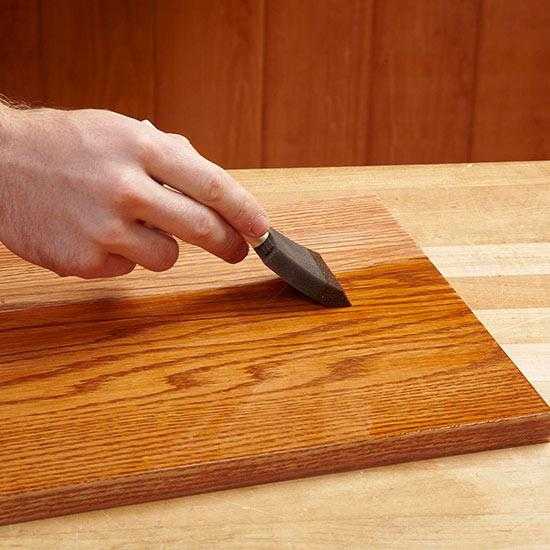 After the paint dried, the paint wiped off the areas with the jelly to create a farmhouse effect.
After the paint dried, the paint wiped off the areas with the jelly to create a farmhouse effect.
Next time you go the hardware store, feel the difference between the hardwoods and inexpensive lumber. You will notice how much smoother the surface is. And the boards also tend to be much straighter.
All these things will ensure a high-end finish in your building project.
Now on to the painting and finishing!
How to Get a Smooth Paint Finish on Wood
Supplies:
- Sandpaper, multiple grits from medium to ultra fine
- Paint
- I don’t believe there is one paint that is the end-all-be-all for the best results. Use what you love. I use the Behr Interior Paint & Primer in One most often and am very happy with the results. For the bathroom vanity I used the Behr Pot of Cream in Eggshell.
- I have used the newer water based Cabinet Enamel paints for painted cabinets recently. They offer a hard, enamel-like coating for durability.
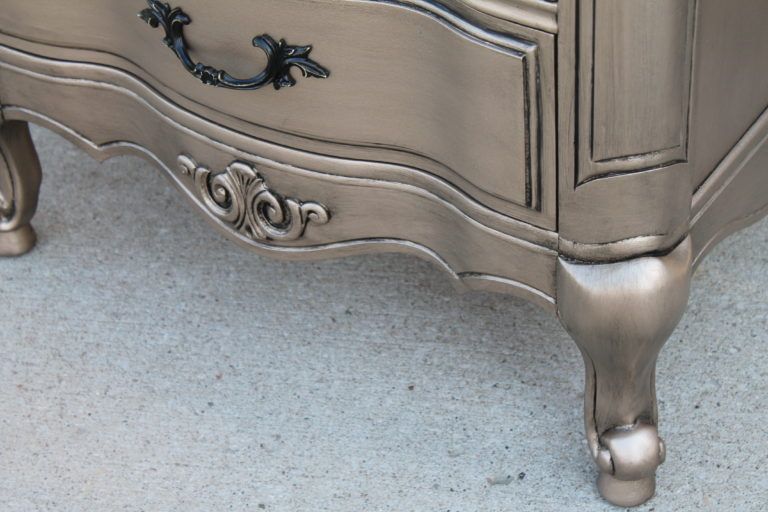 Use the same process as below to get a smooth finish with it.
Use the same process as below to get a smooth finish with it.
- Paint sprayer
- A paint sprayer will give you the smoothest finish. I like the budget friendly HomeRight Finish Max sprayer.
- You can still achieve a great paint finish without a paint sprayer. Make sure to use a high quality paint brush and do not over brush the paint.
- Vacuum
- Tack cloth
- Fine grit sanding sponges
- Polyacrylic or Sealing wax protective finish
1- Prepare for Paint
Proper preparation is the key step to getting a smooth professional paint finish on anything!
Start by sanding your piece very well. All the paint in the world cannot cover up rough wood. This is one of the main reasons I love using quality lumber, it makes sanding so much easier.
If you are starting with rougher lumber, start with a lower grit sandpaper (like 60 or 80 grit). Then step down to a medium grit (100), then a fine grit (150-180) and always end with an extra fine grit (220 grit).
Always sand in the direction of the grain. Pay extra attention to the places where boards connect.
Once the entire piece is sanded down, vacuum it to remove dust, debris, and sawdust. Before I had a shop vacuum I use my household vacuum. If you have a dusting attachment, use it to help loosen anything on the surface of the wood.
After the surface of the wood is vacuumed and appears clean. Use a tack cloth to pick up the fine dust particles from the wood.
This is the first time I used a tack cloth and it is a game changer. It’s super easy to rub all over the furniture piece and it’s amazing how much dust you will get off what looked like a clean surface.
This also helps you see if there are any spots that need additional sanding because the tack cloth will snag on a rough spot.
2- Paint the First Coat
Now you are finally ready to apply paint. I used the HomeRight FinishMax sprayer. Painting the vanity with the sprayer took a fraction of the time it would have taken with a paint brush. Also, it dried quickly so I could complete the project faster.
Also, it dried quickly so I could complete the project faster.
To use this paint sprayer you need to thin the paint (their new Super FinishMax sprayer does not require it). You can determine if your paints needs to be thinned by using a very simple drip test. The paint must pass through the specific container in 25-40 seconds to be ready to use in the sprayer.
For my first coat, since it would ultimately be my primer (my paint had primer included in it), I only thinned it to 40 seconds so it was the thickest it could be for more solid coverage.
If you are using a water based paint, you can thin it with just water (yay!). If you are using an oil based paint you will need to use an oil-based medium that is recommended by the paint you are using.
Completely cover the entire surface of your piece in paint. Be aware that it will be spotty/streaky as the paint will soak into the wood a bit. Do not apply a thicker coat for the first layer to try to achieve a smooth finish or you may get drips.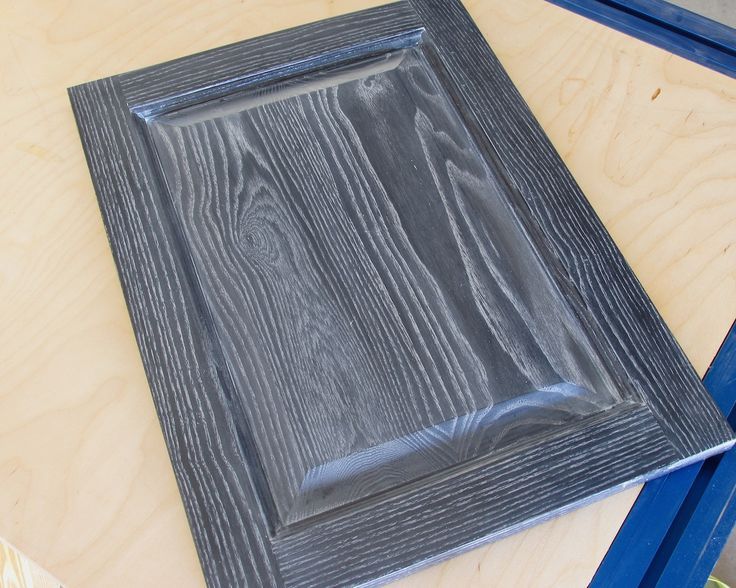
Multiple coats are necessary and will result in a better final finish.
When to Paint Furniture
It’s worth noting that I painted my vanity in the summer, and it was HOT and DRY! We had temperatures in the 90s that week.
Typically, it is not recommended that you paint in extreme hot or cold temperatures. The paint will dry extremely fast in these high temperatures.
If you are using a paint brush to paint in the heat, it will leave brush strokes and the paint will dry in your brush making a mess of the brush and leaving clumps of paint or brush strokes on your furniture. This will not result in the smooth professional paint finish you are hoping for.
The paint sprayer did not have any issues in the heat though. And it was dry almost immediately after painting so that was an added bonus.
3- Sanding Between Coats of Paint
After the first coat has dried, use a fine grit sandpaper and sand the entire surface by hand.
I use the sanding sponges for this step and love them. They make it easier to get into corners because the sanding surface is on 4 sides of the sponge.
They make it easier to get into corners because the sanding surface is on 4 sides of the sponge.
Give it a good sanding to remove any bumps or texture in the paint. Be careful around edges because it is easy to sand them too much and end up with a worn look (or go heavy on the edges if you want the worn look).
To make sure the piece is sanded enough, I run the palm of my hand over it to see if it feels smooth to the touch.
Once everything is sanded, pull out the vacuum again. Vacuum the entire piece of furniture as you did above. Then grab the tack cloth and remove any additional dust from the surface.
4- Paint the Remaining Coats
Now it is time for a second coat of paint.
For the second (and third) coats of paint, I thinned the paint to a thinner consistency. For the drip test, it only took 25 seconds for my paint to pass through the container.
The thinner paint made for a smoother coverage from the paint sprayer. Coat the entire piece of furniture with a second coat of paint. There should be very little to no streaks/spottiness when you finish this coat.
There should be very little to no streaks/spottiness when you finish this coat.
After the second coat has dried, continue sanding between coats of paint, vacuuming and cleaning with tack cloth before adding the next coats.
Now it is time for a third coat. Thin the paint the same as you did for the second coat and cover the entire piece. After this coat the surface should look smooth and uniform.
I stopped at 3 coats for my bathroom vanity, but sometimes a forth coat is needed or desired. Paint, paint color, and wood can all affect if you need more coats.
Add more coats as necessary. Make sure to sand between each coat of paint. Then vacuum and tack cloth the surface before adding paint.
5- Add the Protective Finish
Once you are happy with your paint. Give it a very light hand sanding with the ultra fine sanding sponge. Then it is time to protect it.
This step is optional, but will create a protective finish on your piece of furniture.
If using a water-based paint, you want to use a water-based polyacrylic finish.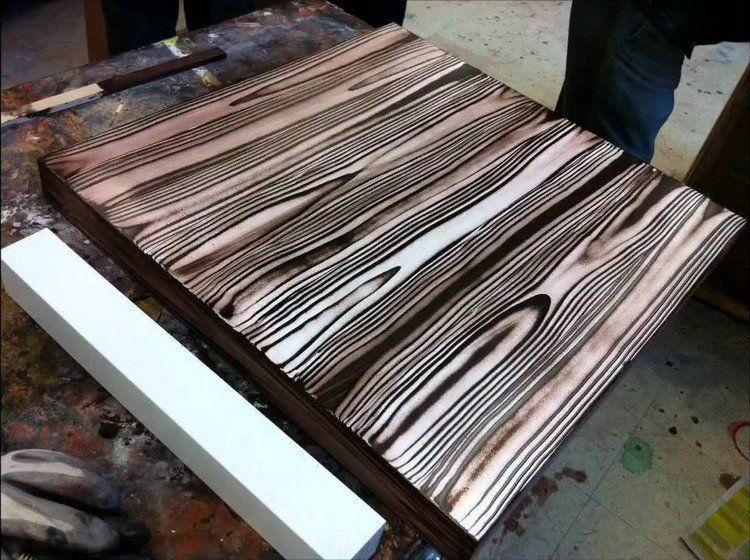 If using an oil-based paint, use and oil-based finish.
If using an oil-based paint, use and oil-based finish.
Polyurethane finished will yellow over time and are not recommended for use on painted finishes.
A wax finish will add a matte or low-sheen finish to the paint.
Typically the higher the gloss to a finish, the easier it will be to clean. I usually use a satin/semigloss finish for walls and furniture in the kitchen and bath.
If you are using a sealing wax, buff it on the surface with a brush or rag. Then buff off the extra. Repeat if needed, but typically 1 coat is sufficient for waxes.
If you are using a poly coating, using a high quality paint brush or paint sprayer to apply a coat to the entire piece of furniture. Let it dry.
If a second coat is needed (and I usually advise at least 2 coats for normal furniture and 3 coats for high traffic or areas around water), you will need to sand between coats, then vacuum and tack cloth the piece before adding the polyacrylic.
This will ensure a super smooth finish.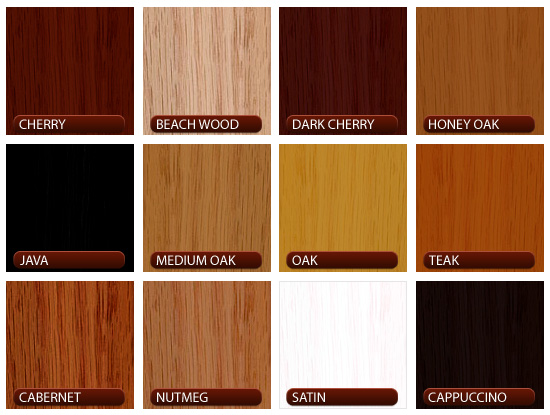 However, you do not want to sand the final coat or you will end up with a cloudy finish.
However, you do not want to sand the final coat or you will end up with a cloudy finish.
Now you can stand back and admire your beautifully painted piece of furniture that no one will be able to tell was homemade!
A proper paint finish will make all your pieces stand the test of time, and isn’t that what you want from a piece you spend the time to build yourself? I know I do. Maybe I’ll even be able to pass them down as family heirlooms someday.
It may seem like a lot of work for a perfect paint job, but it really is mostly waiting for things to dry. And if you want to take the time to build something you will want to finish it properly too.
Materials
- Sandpaper (multiple grits from medium to ultra fine)
- Paint (use a Paint & Primer in one to eliminate an additional primer step)
- Tack cloth
- Ultra fine sanding sponge
- Polyacrylic or Sealing wax protective finish
Tools
- Sander
- Paint sprayer
- Vacuum
Instructions
- Sand your furniture piece smooth.
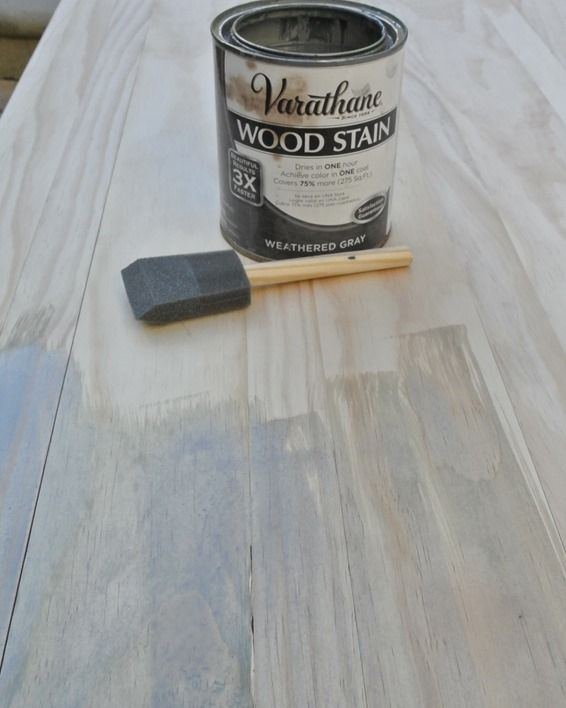 Start with a lower grit if needed. Step down your grits and finish with an ultra-fine grit. Sand with the grain of the wood.
Start with a lower grit if needed. Step down your grits and finish with an ultra-fine grit. Sand with the grain of the wood. - Vacuum all the dust from the furniture piece. Use a bristled attachment to help loosen the dust as you vacuum.
- Wipe off any remaining dust with a tack cloth.
- Fill your paint sprayer with paint. Thin the paint if needed.
- Spray the first coat on your furniture. Use a light coat to avoid drips. You may have some spottiness after the first coat.
- After the first coat is dry, lightly sand the entire surface with an ultra fine grit sanding block.
- Vacuum the dust off and clean the surface with a tack cloth.
- Paint the second coat of paint on the piece the same as the first.
- Repeat by sanding between coats of paint. Then vacuum and tack cloth before applying the paint.
- Paint a third coat, then fourth coat if needed.
- Sand, vacuum and clean the piece again.
- Apply a protective finish of polyacrylic or wax.

- If using wax, no need to sand between coats if you want a second coat.
- If using a poly finish, sand, vacuum, and tack cloth between coats. Apply 2-3 coats as desired.
Now I’m off to cross something else off my crazy long to-do list.
How to paint wood furniture: an expert guide |
Knowing how to paint wooden furniture is a useful skill that can help to breathe new life into old furniture. Whether you want to refresh a family heirloom, change your home's scheme for less, or want to reinvigorate a second-hand piece, painting wooden furniture is easy.
Painted furniture ideas are endless, however, the process is a lot different from painting wood trims around your home. Preparation is key to ensuring a lasting, flawless finish so patience and a steady hand are required when tackling a furniture project. If the process is rushed, you risk marring the piece – something you will hope you avoid.
Here, we have spoken to experts to learn their top tips for painting wooden furniture, from picking the right piece through to finishing a project, so that you can achieve the best finish every time.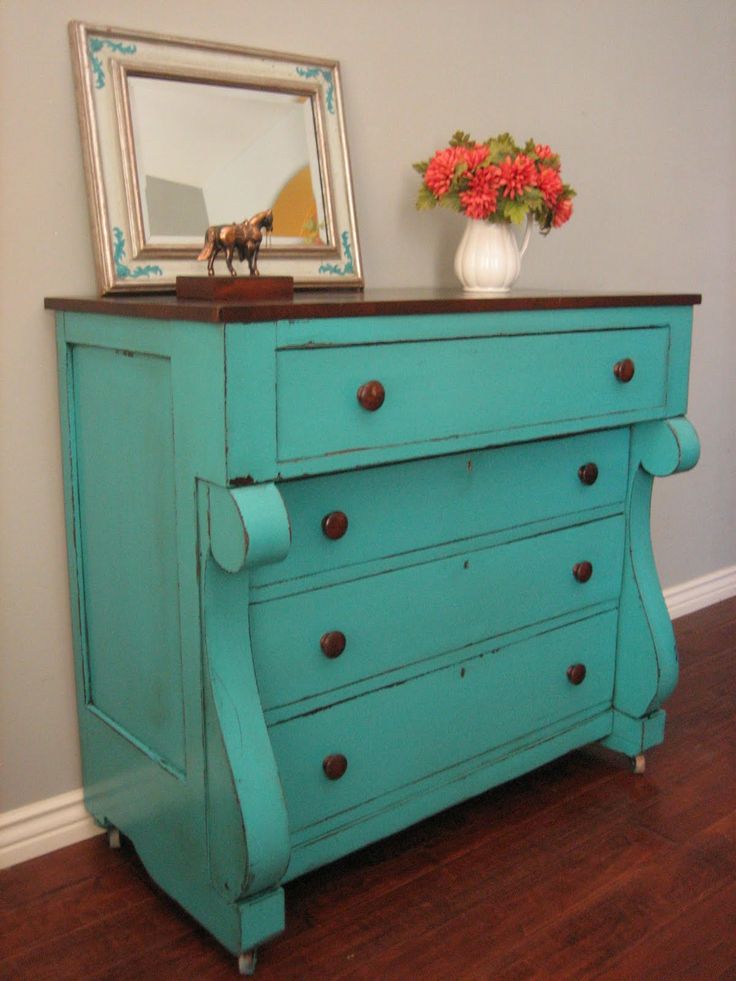
How to paint wood furniture
(Image credit: Getty Images)
Gone are the days of hastily assembled flatpack and cookie-cutter interiors. Today, interior design is all about personality and character. Antique and vintage stores are a treasure trove of beautiful pieces of furniture that you won't find anywhere else. However, these vintage gems often need a little TLC to bring them up to scratch or sometimes need a change of color to suit your look.
'Colorful furniture has made a huge resurgence over the last few years, but it has been hard to find exciting colored cabinetry outside of the bespoke sector,' says Claire Hornby, head of creative at Barker and Stonehouse . Learning how to paint wood furniture gives you the opportunity to create a piece full of color and character that perfectly complements your interior scheme.
That’s where the painted furniture revolution comes to the fore. Learning how to paint wood furniture can transform a boring brown dresser that's otherwise destined for landfill into the hero of your sustainable kitchen ideas.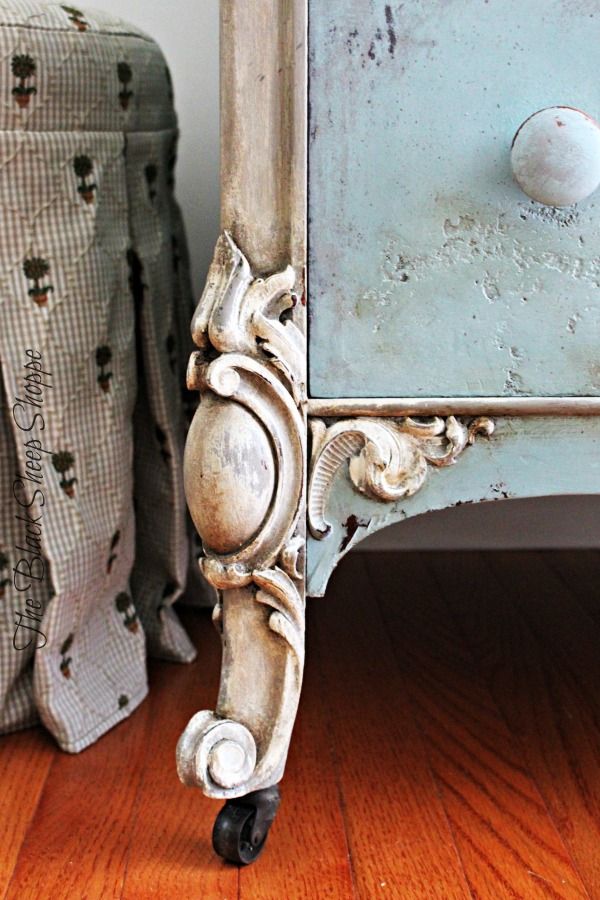
In addition to creating characterful pieces for your home, learning how to paint wooden furniture will also save you money as lots of these antiques sell for a song, and also know that you’re doing your bit for the planet, repurposing rather than buying new.
1. Prepare your space
As with any painting project such as how to paint a wall or how to paint a door, you need to ensure you ventilate the area. For painted furniture projects this is easier, as the piece can often be moved outside into the open air or into a shed or garage. If the furniture cannot be moved outside, open up windows and internal doors to allow for a through-draft to help clear the air in your home.
When painting wooden furniture, make sure you lay out a dust sheet to catch any dripping paint. This is especially important if you are painting inside or on outside deck ideas.
2. Prepare your furniture
Remove any hardware, doors, and drawers and dismantle any sections of the furniture that is easily removable to allow for even coverage across the entire piece.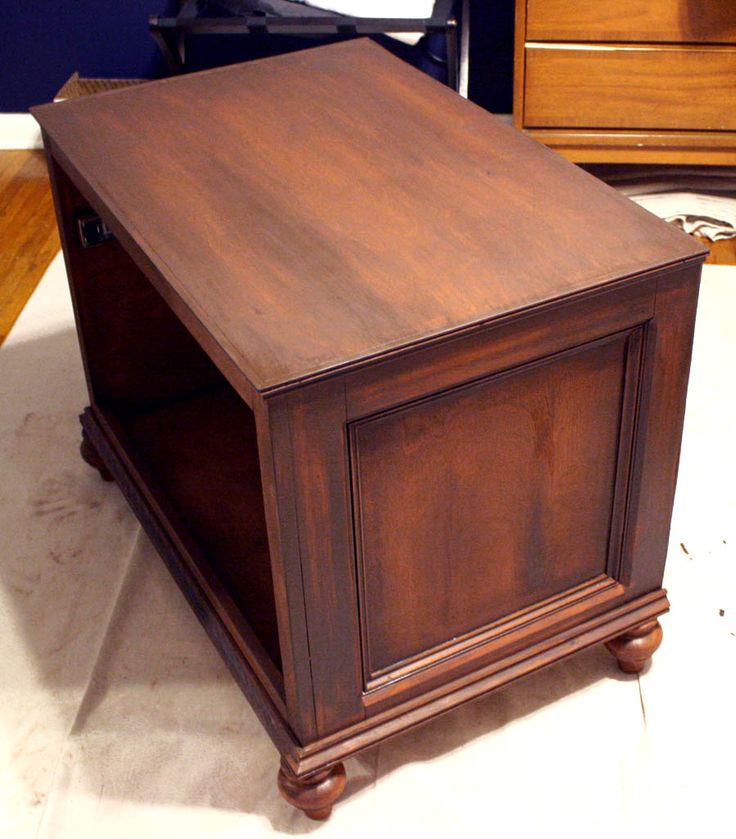
Sanding is key before any repainting project. ‘It is always important to prepare the surface as outlined on the tin, even if previously painted,’ adds Hanna Ellis. If a piece has previously been painted, sand with coarse sandpaper to remove the previous color and leave an even surface, and vacuum or wipe away any dust. Wash unpainted furniture with sugar soap (available on Amazon) and then lightly sand. Wipe with methylated spirits to remove any dust or grease.
If you are looking to repaint a painted or glossed piece of furniture, it is important to remove this layer first. To achieve this sand the surfaces with coarse sandpaper, (between 60 and 80 grit). If your piece has intricate carving and detailing, treat it with a stripper to remove paint and gloss. If you're unsure of where to start then be sure to find out how to strip paint from wood.
For an unpainted piece, 'start with a good scrub with sugar soap to remove dirt, grease, old polish/wax or nicotine, rinse thoroughly and allow to dry,’ says Hanna Ellis of Frenchic Paints .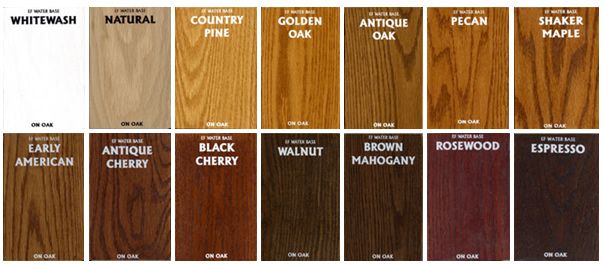 Then follow by sanding with a light sandpaper (between 180 and 220 grit) to create a key to help the paint to adhere. Once having sanded your piece, wiped the surface with methylated spirits to remove any grease or dust. Then leave to dry for a few moments before painting.
Then follow by sanding with a light sandpaper (between 180 and 220 grit) to create a key to help the paint to adhere. Once having sanded your piece, wiped the surface with methylated spirits to remove any grease or dust. Then leave to dry for a few moments before painting.
3. Prime wooden furniture
Knowing how to open a paint can is also essential – yes, there is a right way to do it. While you often only have to prime certain surfaces, adding a coat or two of suitable prime to any project will allow for a more even layer of paint. Prime your furniture and allow it to dry for the recommended time as stipulated in the tin. Drying time is key to ensuring that your finished piece isn't streaky or patchy.
4. Start painting
Once your primer has dried or if your paint includes a primer then you can start painting. Opt for a round brush and apply your first coat of paint, ensuring all details are painted thoroughly. You may need to change to a smaller, finer brush if your furniture as particularly intricate details that a larger brush cannot reach.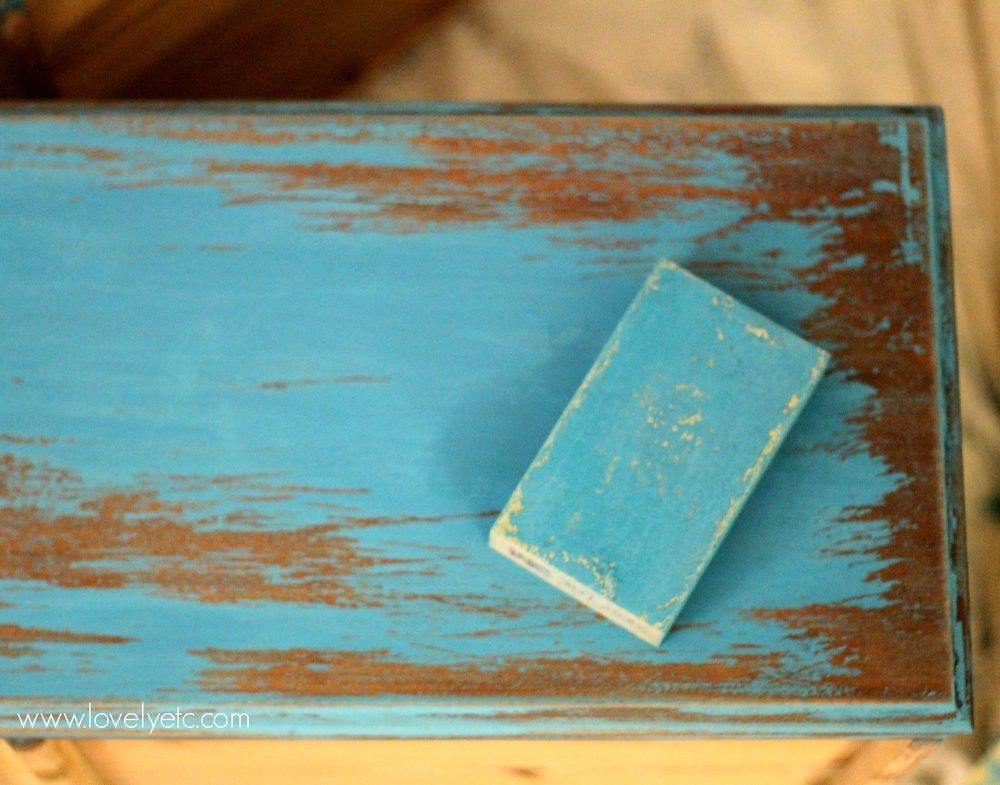 Then allow to dry for the recommended time.
Then allow to dry for the recommended time.
5. Apply a second coat
When this is dry then apply your second coat. If using milk paint, brush along the direction of the grain, while chalk and mineral paint looks best if painted in different directions.
6. Finish the piece
Finishes are key if you don’t want all your hard work to go to waste. Some paints, especially milk paints, are self-sealing meaning that after a few days of curing it will be incredibly durable. However, other paints such as chalk paints will need a wax or lacquer to prevent them from being marked or scuffed.
'Water could damage chalk paint if left unprotected. Opt for a specific chalk paint wax to protect your furniture while also giving a beautiful mellow sheen,' says Annie Sloan. 'Alternatively, you can use matt or gloss chalk paint lacquer. Matt will give a slightly clouded finish whereas gloss chalk paint lacquer will give a high-end sheen.'
Finding wood furniture to paint
(Image credit: Jon Day Photography)
The secret to finding a good piece of wood furniture to paint is to look for good bones.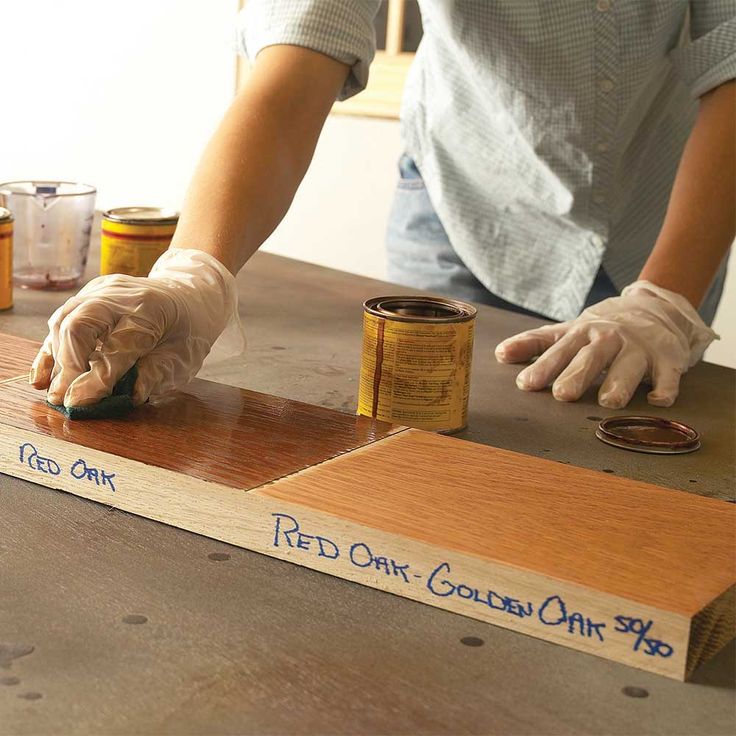 Look past ironmongery, colors and any scratches and instead look at the piece's silhouette. Ensure that it is well made, look for solid wood and dovetail joints. Check all mechanisms are working well and that the piece stands strongly and doesn’t rock or wobble.
Look past ironmongery, colors and any scratches and instead look at the piece's silhouette. Ensure that it is well made, look for solid wood and dovetail joints. Check all mechanisms are working well and that the piece stands strongly and doesn’t rock or wobble.
'I hate the thought of well-built, carefully crafted furniture going to landfill. And while from an aesthetic point of view they might have seen better days, there is still plenty of life left in these old pieces,' says Claire Manton, founder of Claire's CraftHouse . 'With the interiors market looking to become more sustainable, upcycling is a great way to reuse pre-loved pieces, while unleashing your own creativity.'
Choosing the right brush for painting wood furniture
(Image credit: Cornish Milk Mineral Paint)
An often overlooked element, the right brush can make or break your project. When starting to research how to paint wood furniture, brushes are a key consideration.
‘There are different schools of thought on brushes, and it really depends on the type of paint you are using.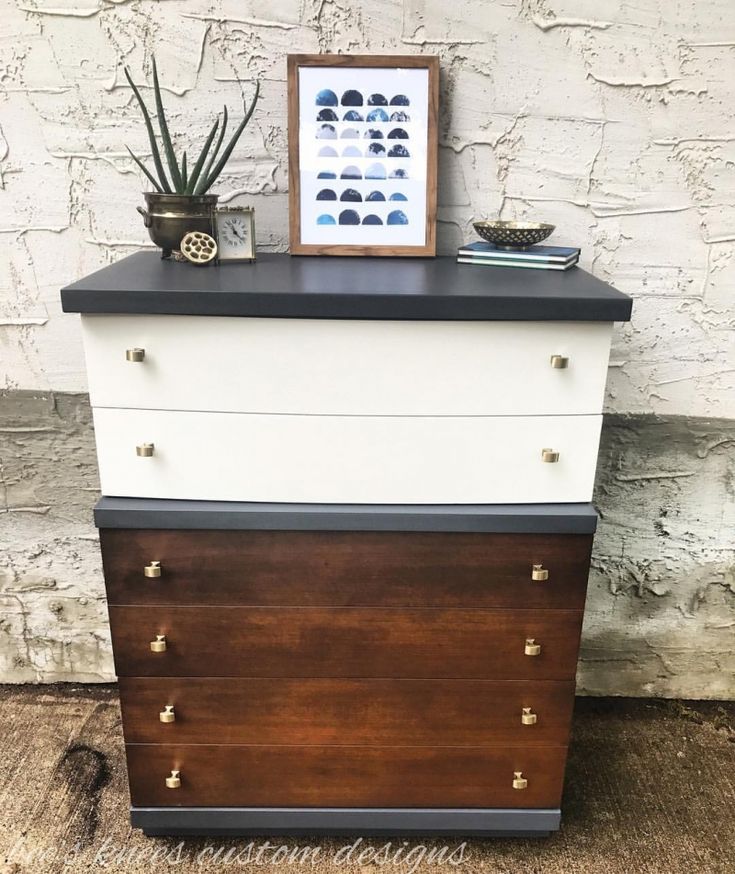 For milk paint, which is water based and quite thin, synthetic bristles or a blend is better as they absorb less water meaning more paint ends up on the surface being painted, and stops the paint drying out too much on the brush. A slanted synthetic brush will give a great finish with milk paint or any thin water based paint,' says Carolyn Moore, owner of Old Fashioned Milk Paint .
For milk paint, which is water based and quite thin, synthetic bristles or a blend is better as they absorb less water meaning more paint ends up on the surface being painted, and stops the paint drying out too much on the brush. A slanted synthetic brush will give a great finish with milk paint or any thin water based paint,' says Carolyn Moore, owner of Old Fashioned Milk Paint .
'However, some of the thicker mineral/chalk paints will work better with a thicker natural bristle brush, even a round brush often used for waxing, as they hold more paint, meaning fewer dips in the paint and therefore fewer brush marks. If you are planning a lot of painting, look for a good quality brush – the best you can afford, to avoid annoying bristle shedding and ensure they stay in shape following repeated uses.'
The best paint to use on wood furniture
(Image credit: Annie Sloan)
There are lots of different paint finishes to choose from when finding out how to paint wood furniture.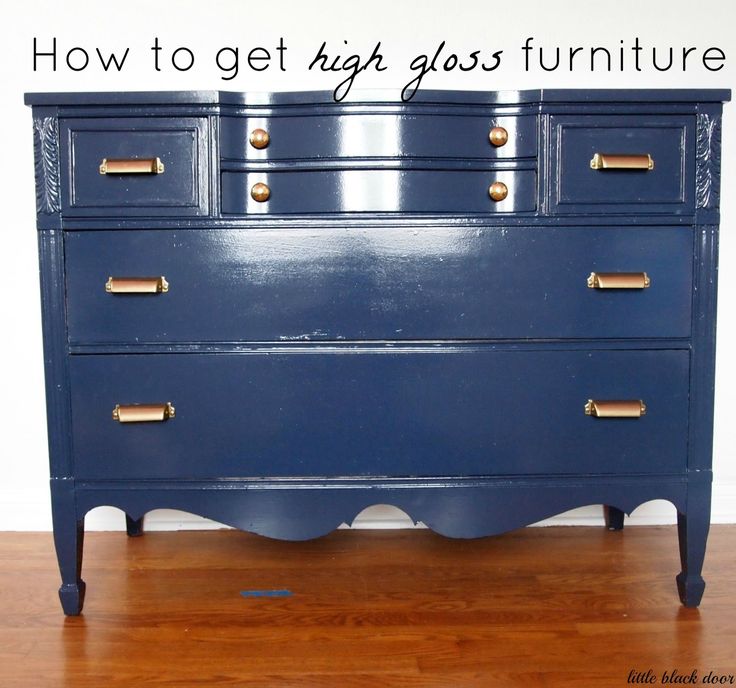 Your choice will predominately depend on the look you want to achieve, though it will also be guided by whether you are happy to use a primer and sealant or are looking for an all-in-one product. Also consider selecting eco-friendly paints to keep your project kind to the planet.
Your choice will predominately depend on the look you want to achieve, though it will also be guided by whether you are happy to use a primer and sealant or are looking for an all-in-one product. Also consider selecting eco-friendly paints to keep your project kind to the planet.
- Chalk paint is the most common choice of paint for wooden furniture and gets its name from the luxurious chalky finish it creates. ‘It’s a multi-purpose paint that applies to just about any surface, without the need for priming or sanding,’ says Annie Sloan, founder of Annie Sloan Paints .
- Mineral paint is crafted from mineral pigments combined with a binder, typically acrylic resin. 'Unlike milk and chalk paint, which need to be sealed with a wax or varnish to prevent absorption of grease or moisture, mineral paint is waterproof and washable rather like an eggshell or satin paint,' says Carolyn.
- Milk paint is quickly becoming a favorite for furniture restoration.
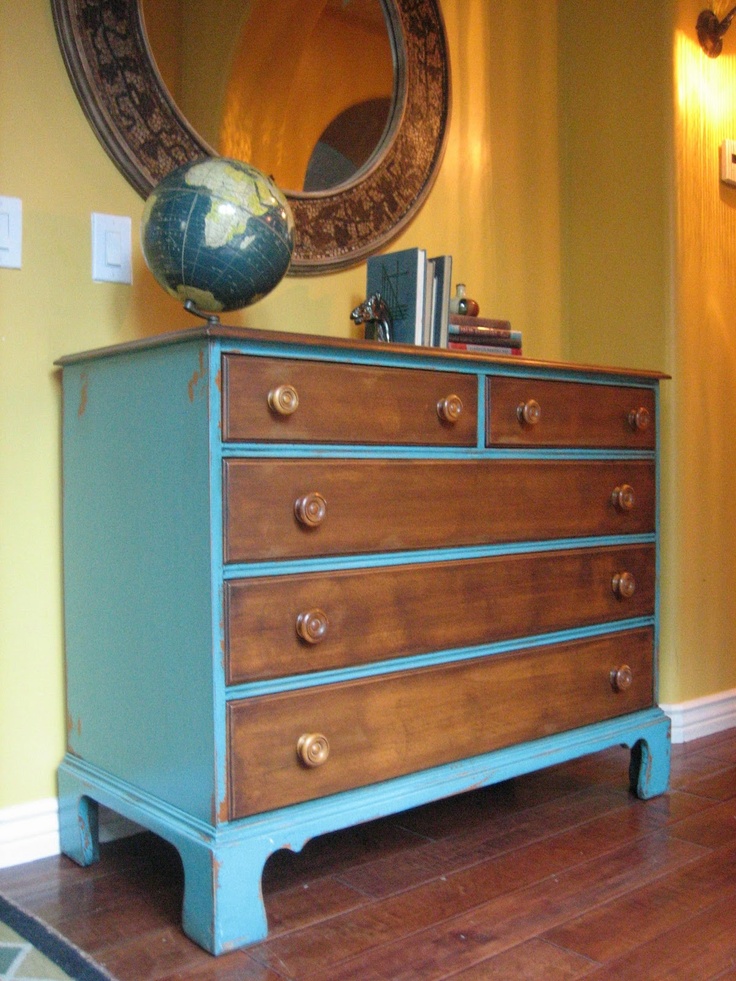 'Traditional powdered milk paints achieve a finish that is flat back to the grain and produces no brushstrokes,’ explains Joe and Reece Daden-Tapp of Cornish Milk Mineral Paint .
'Traditional powdered milk paints achieve a finish that is flat back to the grain and produces no brushstrokes,’ explains Joe and Reece Daden-Tapp of Cornish Milk Mineral Paint . - 'It is perfectly possible to use a normal eggshell, satin or spray paint on furniture too, if you want a contemporary, sleek, full cover paint finish, as long as you prepare it well!' adds Carolyn.
How to avoid streaks when painting wooden furniture
(Image credit: Annie Sloan)
Avoiding streaks when painting wooden furniture, all comes down to your paint finish and your direction. ‘With milk paint it’s always best to brush along the direction of the grain, but there’s no need to worry too much about brush marks, (especially on raw wood as it sinks in like a stain), milk paint is very forgiving – it dries really fast, but with a light sanding using a super fine sanding sponge after each coat, it leaves a rich, buttery smooth finish and no brush marks. However with chalk and mineral paint, it is recommended to paint in different directions to avoid brush marks, and fat round brushes work better,’ explains Carolyn.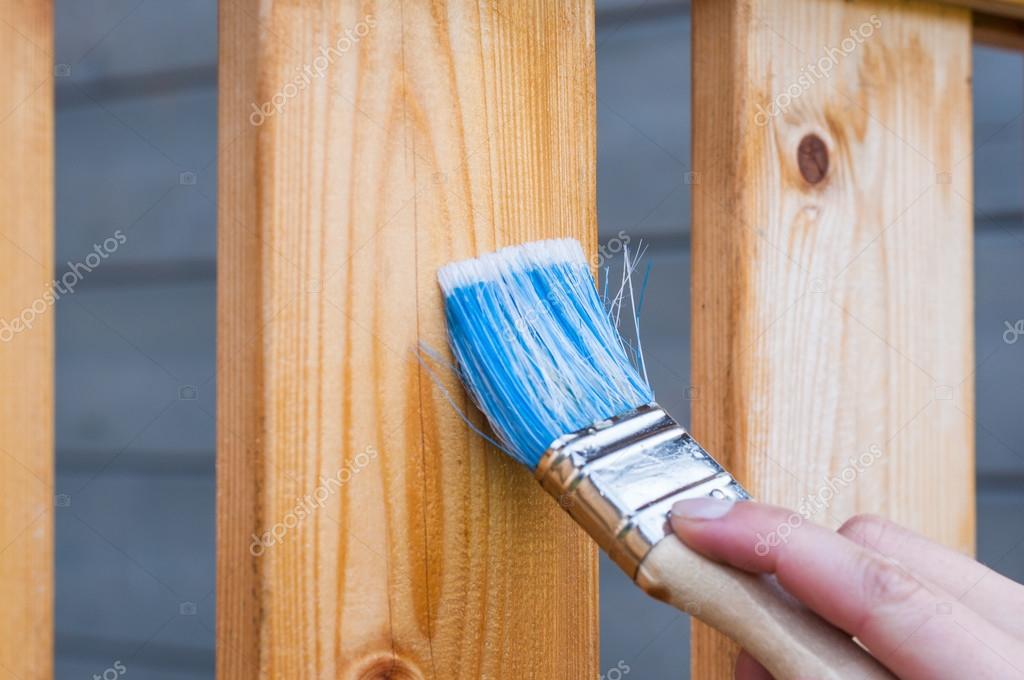
‘When applying the paint, try not to overload your brush as this can lead to overworking the paint which tends to cause dragging marks and unwanted texture. The other tip is to make sure you leave the correct amount of hours between coats,’ adds Hanna Ellis.
Do you need to prime wood furniture before painting?
You don't necessarily need to prime wood furniture before painting. This slightly differs from how to paint a wall where priming is vital to achieving a high-end finish.
Lots of chalk and mineral paints feature an integrated primer meaning that after a light sanding and a wipe down, you can apply the paint and still achieve a flawless finish. Some furniture paints will require a primer before use, be sure to check the tin before starting your project.
However, even if you do not need to use a primer, it is essential that you prepare the wood before you start painting.
Should I paint the interior of wooden furniture?
Whether you decide to paint the interior of your wood furniture is utterly up to you.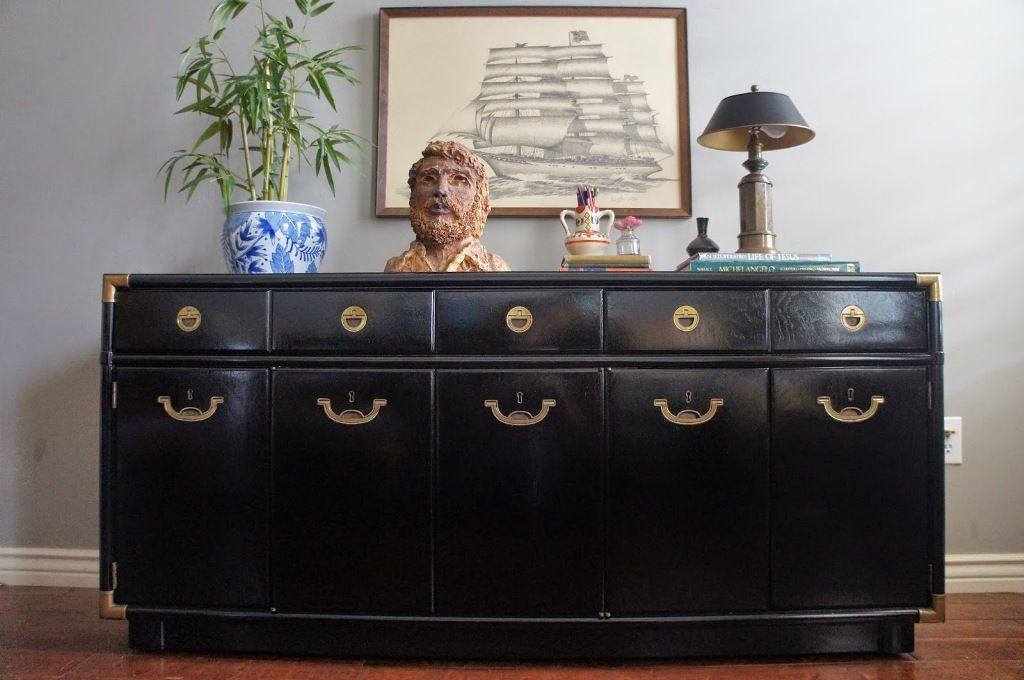 'Sometimes a thorough clean and some hemp oil or wax is sufficient to tidy them up,' says Claire Manton. 'It’s worth remembering that if an old piece has a musty smell to it, painting the interior can sometimes help by sealing odours into the wood, thereby reducing any unpleasant smells. Scented furniture waxes and salves are also a good way to freshen things up.'
'Sometimes a thorough clean and some hemp oil or wax is sufficient to tidy them up,' says Claire Manton. 'It’s worth remembering that if an old piece has a musty smell to it, painting the interior can sometimes help by sealing odours into the wood, thereby reducing any unpleasant smells. Scented furniture waxes and salves are also a good way to freshen things up.'
Why does paint peel off wood?
Paint can peel off of wood for a number of reasons, however incorrect preparation such as the lack of cleaning, a primer, or the correct paint is often one of the main causes of peeling paint on painted wood furniture.
To prevent paint from peeling from wooden furniture make sure you follow through with the correct prep work and do not rush the process. While it may be tempting to rush through to complete the project, patience is needed to ensure the best finish. What's more, consider adding a protective finishing coat or wax to seal the paint in and prevent it from peeling due to every day use. This may be especially important on pieces you touch or move every day such as drawers, cabinets, or chairs.
How do you create a vintage finish on wood?
The easiest way to make a vintage finish on wood is to use an antique-style glaze. There are myriad crackled glazes from which to use. Simply apply between coats of paint to create the distressed effect. 'If you are applying a crackle glaze, always choose a period style paint such as milk paint, which will result in a rich, matt finish as would find on older pieces,' recommends Carolyn.
However, for a traditional distressed look, then hand-distressing is the way to go. This is achieved by painting a piece of furniture a solid color and then buffing the corners and edges with a fine sandpaper to reveal the wood beneath. 'Begin by painting a piece of furniture one color and then, once it’s dry, paint over it with a completely different second color. Sand back through to the first color and in some areas go back as far as the original wood.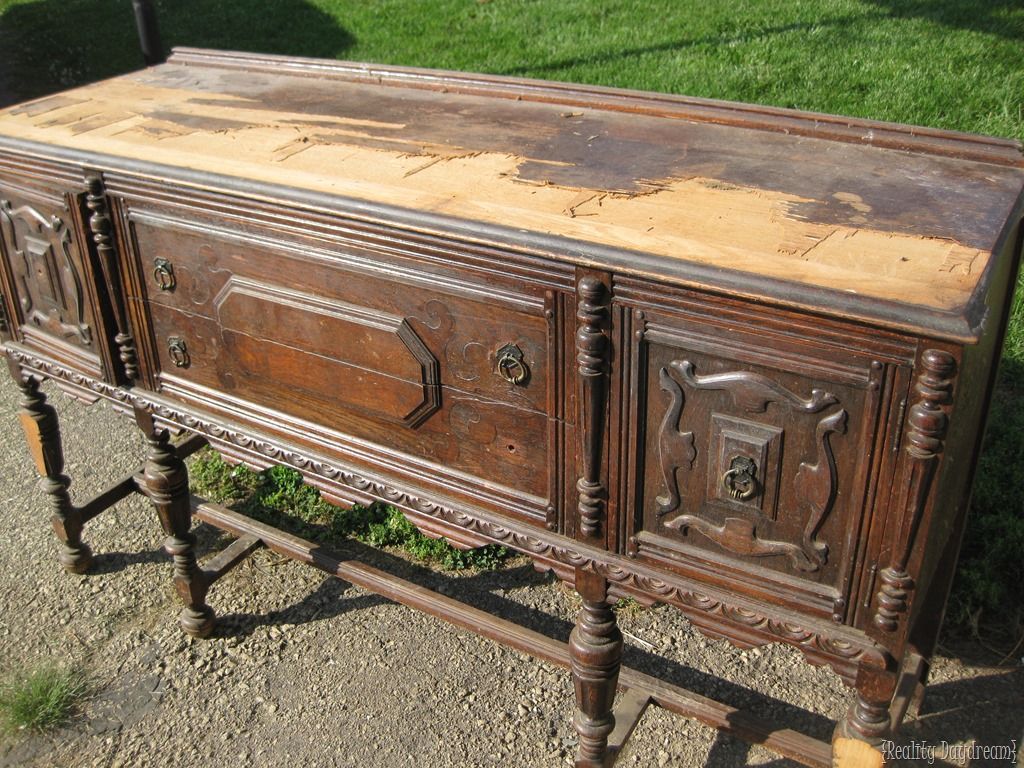 With the right color combination, it looks beautiful,' says Annie Sloan.
With the right color combination, it looks beautiful,' says Annie Sloan.
'You can make the process easier with any type of paint by applying wax to the corners/edges before painting, so the paint flakes in those areas,' recommends Carolyn. 'Any distressing works best when the wood beneath is darker – bright new pine showing through doesn’t look aged, so in that case it is a good idea to stain the wood before painting/distressing. You can even layer paint colors by using a darker color first and a lighter color on top, then distressing back to let the darker color show through – this creates a wonderful effect.'
What happens if you don't sand before painting?
If you don't sand before painting wooden furniture you will not achieve a smooth painted finish as paint will gather in any scratches or scrapes. It will also highlight any other natural flaws in the wood grain. Furthermore, if you don't sand before painting, your paint may not stick to the surface resulting in it peeling off once dry.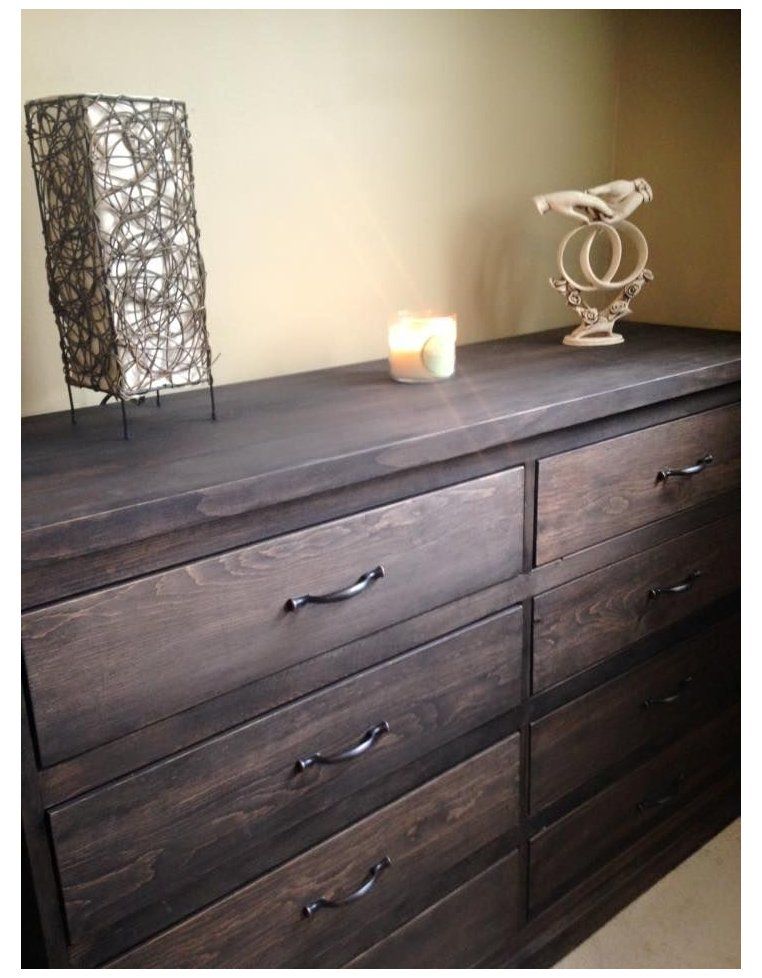 This is because even a light sand provides a key onto which the paint can adhere.
This is because even a light sand provides a key onto which the paint can adhere.
odorless, for first and second coats
Finishing wood furniture is designed to create a decorative protective coating on its surface. For this purpose, a special paint for wood furniture or varnish is used, which is applied to a wooden surface in a thin layer, improving its appearance. Exterior finishes can emphasize the texture of wood or, conversely, change its color.
Furniture painting is designed to create a protective coating of a decorative nature.
Over time, under the influence of external environmental factors, paint coatings begin to fade, lose their luster, burn out. The effects of the natural aging process can be eliminated by restoring wooden furniture by repainting it. But first, let's get acquainted with the rules for preparing wooden products for painting and learn how to make the right choice of paint.
Over time, paint finishes begin to fade, lose their luster and need to be renewed.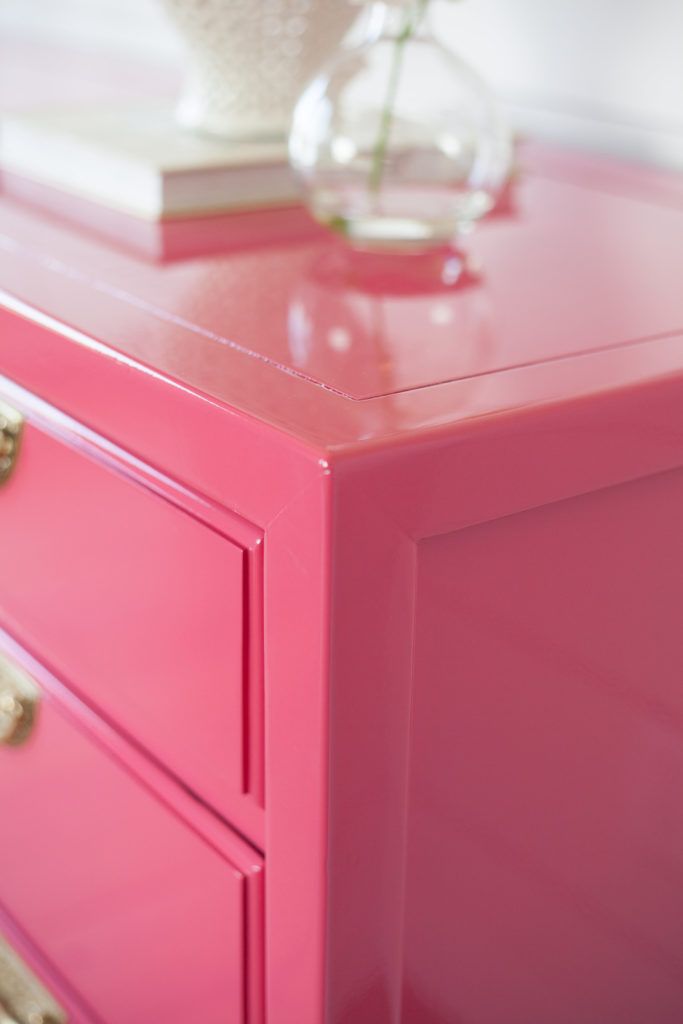
- Types of paints for wooden furniture
- transparent
- water soluble
- Paints on organic solvents
- acrylic paint
- Water-based paint based on latex
- Silicone water-based paint
- How to choose the right paint
- Type of material and furniture
- Re-staining
- Compatibility with other coating
- Features of odorless paint
- How to use paint correctly
- Preparing furniture for painting
- Painting process
- Drying Features
- How to care for painted furniture
- Video: how and how can you repaint old furniture white?
Types of paints for wooden furniture
There are three ways to finish wooden products or their elements with paint:
- opaque;
- transparent;
- artistic way.
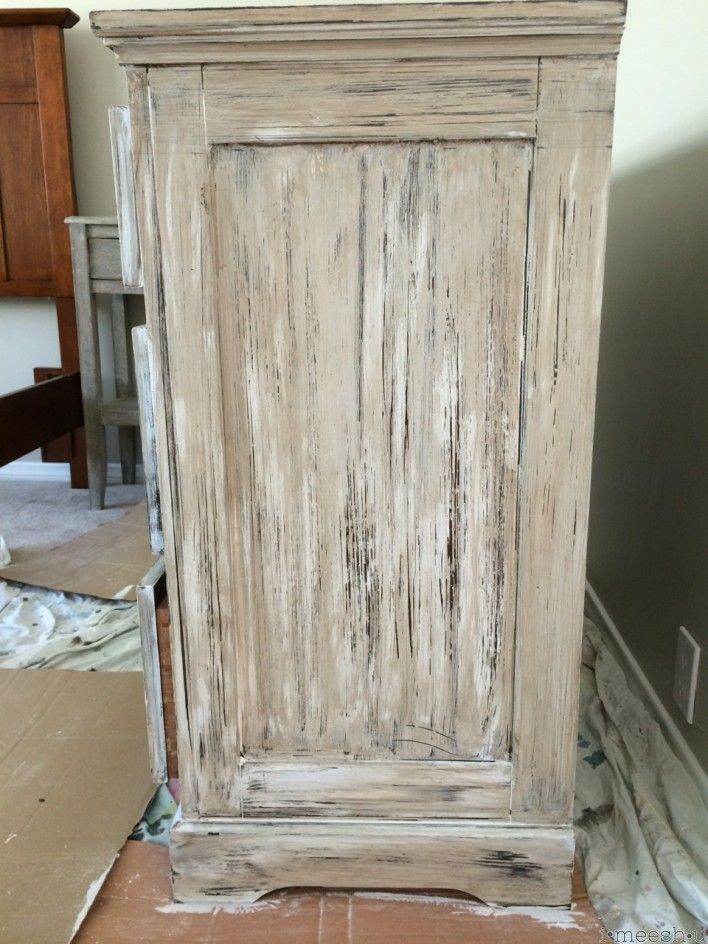
Finishing can be done in different ways.
Depending on the selected coating option, various types of paint and varnish products are used.
The choice of paint and varnish coating will depend on the method of finishing.
An opaque finish can be obtained using water-based, alkyd, acrylic, oil enamels and paints. For a transparent finish, colorless dyes are used - varnishes based on nitrocellulose or polyester, paints using organic solvents, water-soluble, silicone dyes. Artistic decoration is performed by combining materials with different shades, adding decorative elements or inlays.
Artistic decoration of furniture can be done using several materials.
Transparent
Paints and varnishes that are used to coat wooden furniture elements differ in their properties, characteristics, composition and purpose. If, as a result of processing, it is required to preserve the structure of the tree, to express its texture, then transparent coating means are used.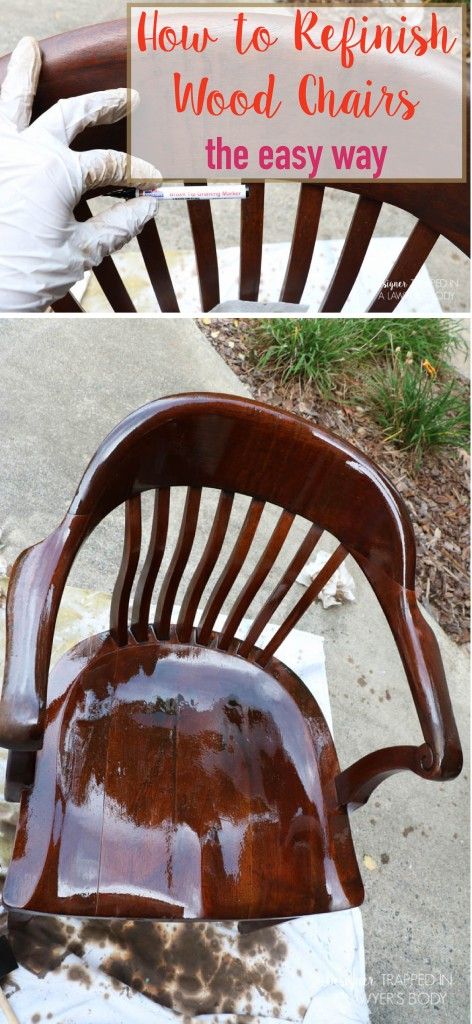 Today, manufacturers offer a wide range of colorless paints or coatings with a slight addition of pigments.
Today, manufacturers offer a wide range of colorless paints or coatings with a slight addition of pigments.
A large number of colorless furniture paints are available on the market.
If necessary, by mixing such materials, you can diversify the shades, achieve brighter, more saturated tones. Colorless paints are represented by materials such as varnish, wax, stain, azure, impregnation.
Colorless paints may contain light colored pigments.
They have the following properties in common:
- emphasize the structure of wood without hiding it, giving it more expressiveness;
- protect the surface from UV radiation, preventing fading and cracking;
- well pass air and moisture, keeping the wood breathable, and do not allow it to dry out.
All transparent materials give the furniture its expressiveness.
Water-soluble
Now, water-soluble paints are the most popular among consumers. This choice is facilitated by a number of features of such dyes:
- wood furniture paint without odor and harmful emissions;
- resistance to light and temperature fluctuations;
- increased moisture resistance and vapor permeability;
- easily change the color, its saturation and hue by adding coloring pigments;
- good elasticity, which facilitates easy application to the element to be painted;
- are multi-purpose, can be glazing, covering, glossy, matte.

Solvent-based paints
Solvent-based varnishes and paints contain a volatile organic compound which evaporates as the paint dries. The most common solvent used in the production of such dyes is refined kerosene. The substance is quite toxic and flammable, emitting an unpleasant, pungent odor.
Refined kerosene is the most common ingredient in solvent based paints.
There are two main types of paints on organic solvents:
- Alkyd paints. The binding element of the dye are alkyd resins. They are a viscous substance obtained by mixing organic acids with vegetable oils, followed by heat treatment. Alkyd paints are used for painting various surfaces, including wood.
- Oil dyes. They are made using mineral oils or saturated resin oils, as well as on the basis of their mixture. The composition of oil paints includes a small amount of volatile compounds, since oils practically do not need solvents.

These paints can be alkyd or oil based.
Solvent paints have a drying time and should be used when working indoors. At the end of the painting, the room requires prolonged ventilation.
Such paints take a long time to dry.
Acrylic paint
Acrylic paints are especially popular today due to the mass of their advantages. They are made on the basis of acrylic resins, water is used as a solvent.
Furniture paints based on acrylic resins are also popular.
The main advantages of the material are:
- excellent adhesion to wooden surfaces;
- the composition of the paint includes antiseptics that prevent the formation of mold and fungus growth;
- have dirt and water repellent properties, which greatly facilitates the care of painted surfaces;
- different range of colors and shades, contributes to the implementation of any design solutions;
- environmental components are used in the production of paint;
- does not contain volatile, toxic substances, dries quickly;
- painted surfaces remain unchanged for a long time, not succumbing to atmospheric influences.
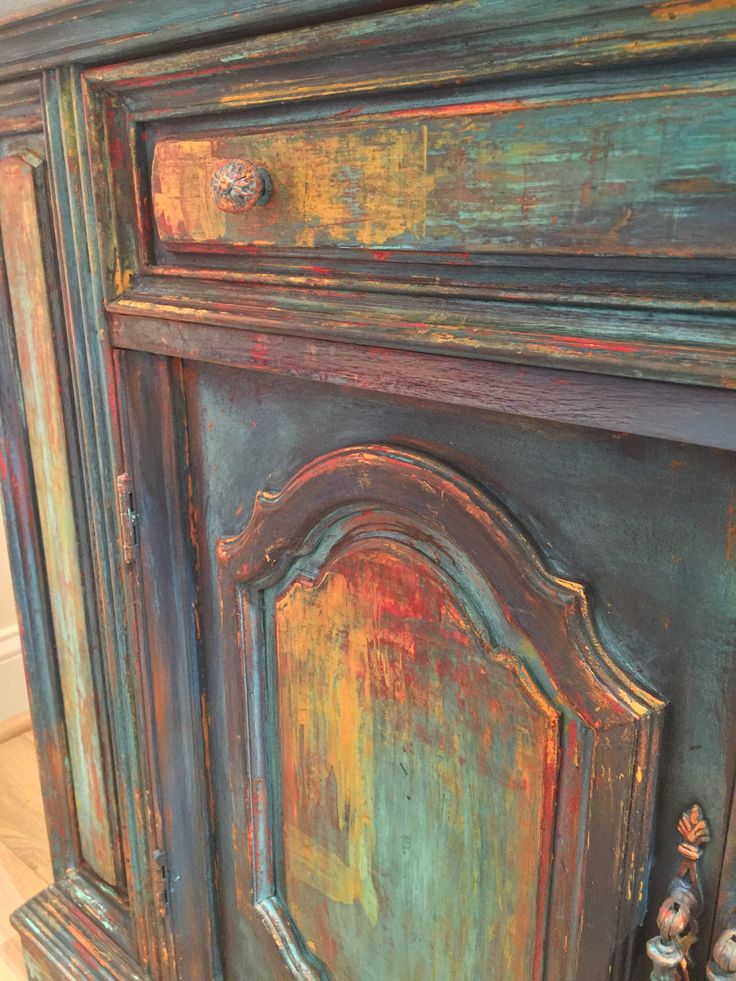
Latex-based water-based paint
Latex water-dispersion suspensions contain microparticles of synthetic latex and emulsions with fillers. Latex paints are versatile in their application, thanks to their high adhesion and deep penetration, especially in wood.
Latex paints are universal and very convenient for painting wooden furniture.
Main advantages of latex emulsions:
- Odorless wood furniture paint;
- forms an ultra-thin, super-breathable film on the surface with water-repellent and anti-static properties;
- thanks to the antiseptic substances in its composition, the paint perfectly resists mold and fungi;
- excellent elasticity of the composition, when painting it is easy to apply to the surface, covering not only small cracks, but also scratches 1-2 mm deep;
- dries quickly after painting.
The main disadvantage of latex paints is their lack of lightfastness and fading.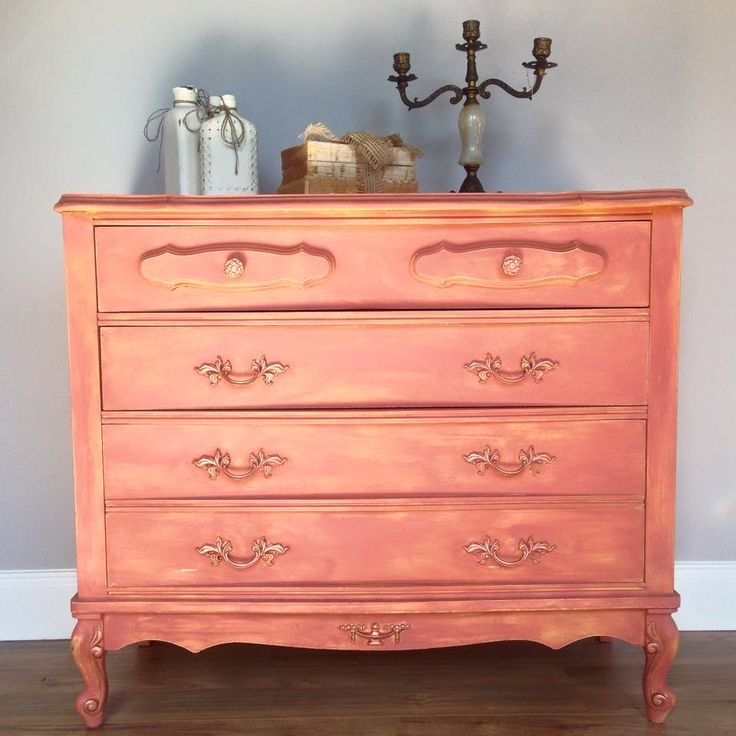
Unfortunately, these materials fade quickly in the sun.
Silicone water-based paint
Silicone water-based paints are made with acrylic/silicone copolymers. Such a suspension is a very resistant material. Furniture coated with this dye will significantly increase its service life, especially in wet areas.
Silicone paint is very durable and extends the life of the furniture painted with it.
The main advantages of silicone-based paint:
- increased moisture resistance and film strength;
- excellent steam conductivity;
- the presence of copolymers increases the elasticity of the material;
- low sensitivity to light and fading;
- effective antiseptic;
- antistatic properties help repel dirt;
- does not crack or swell during operation.
How to choose the right paint
When old but sturdy furniture has lost its former gloss, it is not necessary to think about purchasing a new set, it is better to think about buying paint and restore the old one.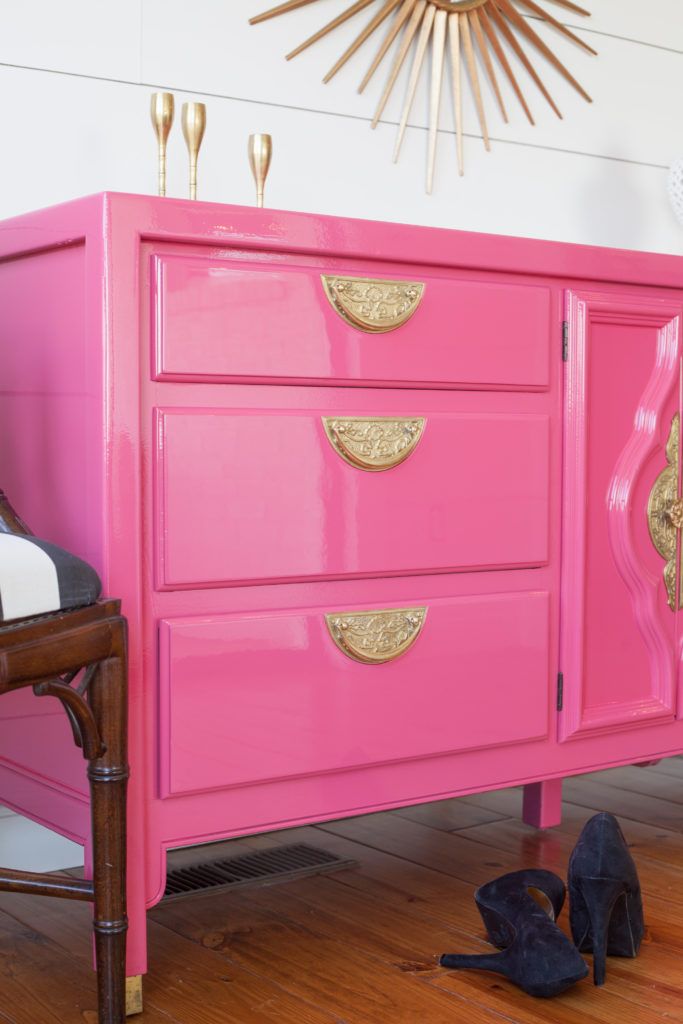 Thus, you kill two birds with one stone - give a second life to your favorite furniture and save money.
Thus, you kill two birds with one stone - give a second life to your favorite furniture and save money.
Buying new paint is easier than buying new furniture.
What you need to know when choosing paint for wood:
- where and in what conditions the furniture was used;
- type of wood of the furniture element;
- the possibility of applying paint again;
- type of paint of the initial coating.
Since this is furniture that is usually found in residential areas, when choosing a dye, give preference to odorless products.
Prefer paint that does not have a strong odor.
Type of material and furniture
Decided to paint the furniture, update its appearance, first decide what, ultimately, you plan to achieve. For example, to give furniture a vintage look, latex-based paint is suitable. This material is best suited for artificial aging of the surface, it will emphasize scuffs and small cracks.
Latex based paint can give furniture a vintage look.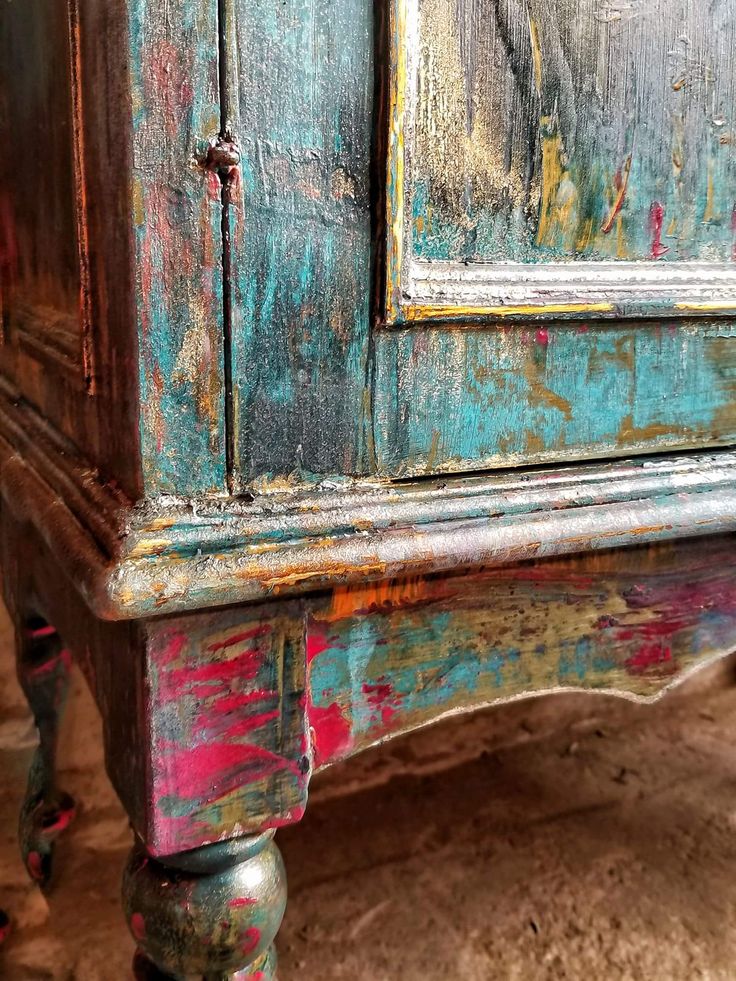
For the treatment of smooth surfaces subjected to external loads - oil paints. This type of paint is quite stable and can be used to paint tables, chairs, bedside tables and other similar pieces of furniture.
It is better to choose oil paints for chairs and tables.
Acrylic composition, best suited for covering small areas, it makes the surface shiny and smooth. Acrylic paint is quite resistant to temperature fluctuations, has high wear resistance and water-repellent properties. Therefore, it can be used for painting bathroom cabinets, kitchen furniture, wardrobes.
Acrylic paints are durable and suitable for almost any furniture.
Recoating
When recoating, be sure to use the same type of paint that was previously applied to the surface. How to determine without special expertise, if information on this issue is hopelessly lost. Go over the old layer with sandpaper, if traces of paint remain on the paper, most likely this is one of the water-soluble emulsions.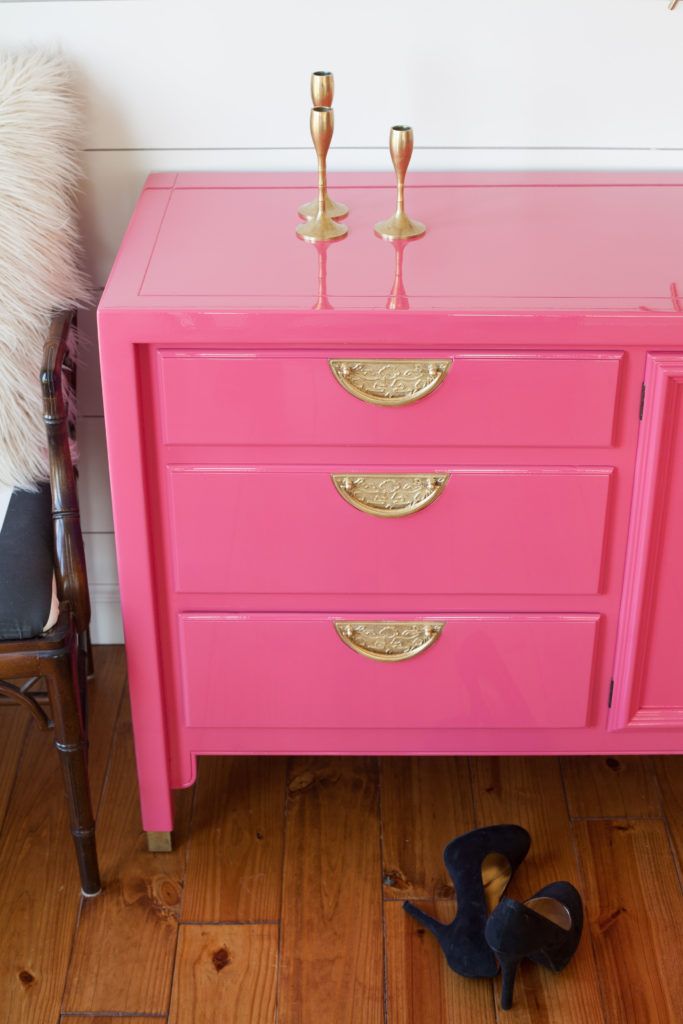 If the old coating crumbles after exposure to an abrasive, then we are dealing with alkyd or oil paint.
If the old coating crumbles after exposure to an abrasive, then we are dealing with alkyd or oil paint.
The conclusion on the old material can also be made by the prescription of its application. If more than ten years have passed since the last staining, then without a doubt, you have an oil-alkyd paint.
The surface to be recoated must be clean, free of grease and dry.
For re-painting, the prepared surface must be dry and thoroughly cleaned of grease, dust and soot, dirt. To return the furniture to its former appearance, take the time to properly prepare its surface for applying paint.
Compatibility with other finishes
In order for your wooden furniture to sparkle again with its former freshness and brilliance, and its staining is completed successfully, one important aspect should be taken into account. It is possible that re-painting will be carried out on a surface containing other materials: putties, enamels, primers. They will most likely have a different color and composition, that is, they may not be compatible with the selected paint.
If you try to apply a new dye to an old coating that does not match it, the result is unlikely to be of high quality. Soon, cracks and swellings will appear on the fresh paint, it will begin to fall off. Then the painting process will have to be repeated and incur additional expenses of both time and money.
Odorless paint features
Modern advances in the production of paints for wooden surfaces enable us to carry out paint work without headaches and prolonged ventilation of the apartment. Odorless paint is ideal for indoor use.
These paints contain environmentally friendly, harmless substances. Mixtures of polymers, polyvinyl acetate and similar substances are used to link the elements in suspension. In addition to the fact that such paints are odorless, they differ in a number of other features:
- after application to the surface, they dry very quickly;
- are intended, practically, for surfaces from any materials;
- have a water-, dirt-repellent effect;
- excellent protection against fungus and mold;
- a varied selection of colors;
- have increased strength.
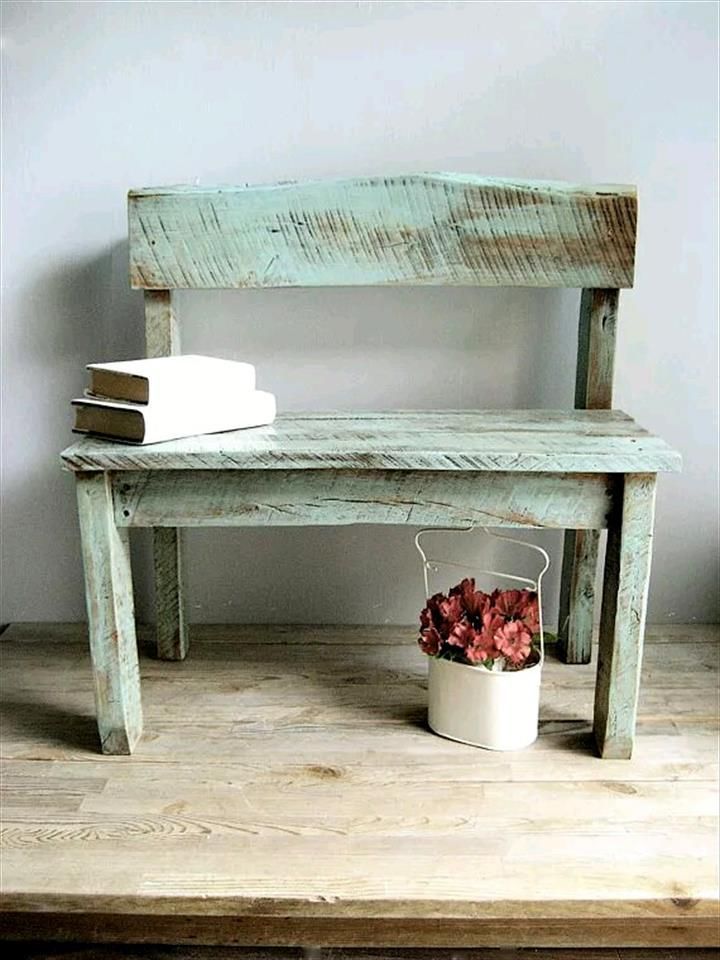
How to use the paint correctly
Painting wood furniture requires certain skills and time and is carried out in stages, taking into account some recommendations. For such work, paints and varnishes of various compositions can be used, depending on the desired result.
Before applying a protective and decorative coating, the surface must be prepared. At the same time, one should not forget that wood is very easily deformed, so the work must be carried out carefully and without haste.
The following stages are distinguished in the technology of painting wooden furniture elements:
- Selection and preparation of tools.
- Preliminary surface preparation for painting.
- Coloring products.
- If necessary, the surface is further processed, eg polished.
Preparation of furniture for painting
When restoring furniture, the main stage of work is the preparation of furniture surfaces for painting.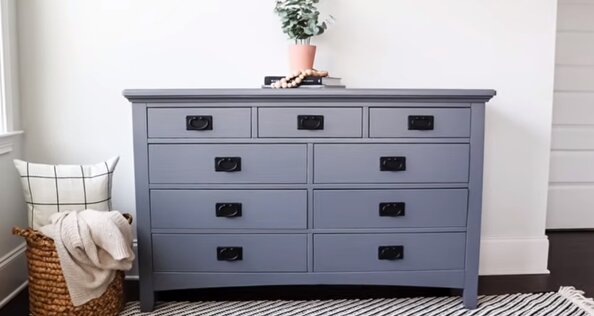 The quality of the preparation directly affects the final quality of the work, how well the paint will lay down, how quickly it will dry, how long the furniture will retain its updated state.
The quality of the preparation directly affects the final quality of the work, how well the paint will lay down, how quickly it will dry, how long the furniture will retain its updated state.
Before painting, the furniture is prepared and sanded.
Schematically, the preparation process can be divided into the following stages:
- We dismantle fittings from furniture parts to be restored.
- We clean the surface, using a spatula, from the layer of the old coating and dirt.
- Sanded with fine abrasive paper.
- Deep scratches, roughness and chips should be carefully puttied.
- We clean the surface from dust.
- We apply a primer mixture to the product as a base for painting. In addition, the primer acts as an antiseptic and protects the paintwork from tannin released from the wood.
The process of painting
Painting wood furniture is a simple process, but requires care. First of all, you need to arm yourself with a high-quality brush that will not leave fallen hairs on the paint.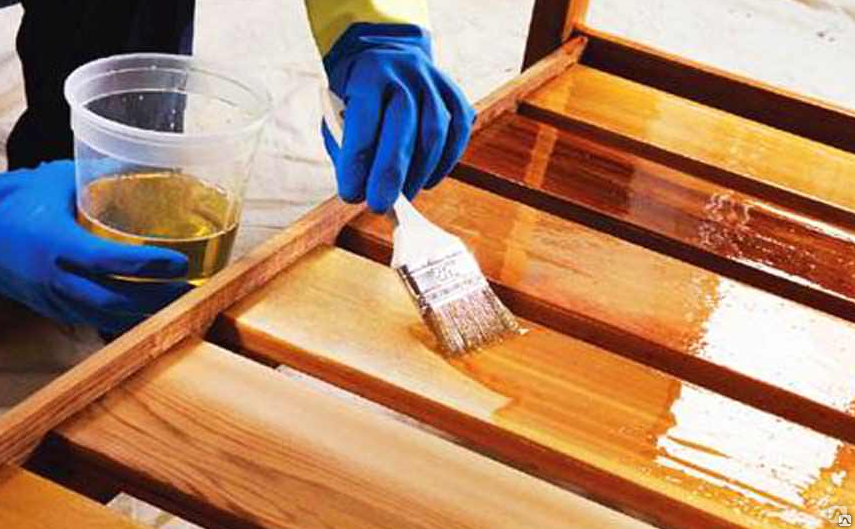 Further, observing simple rules, carefully paint the surface of the product:
Further, observing simple rules, carefully paint the surface of the product:
- the direction of the brush movement should be along the wood fibers;
- if it is necessary to apply a second coat of paint, start work only after the previous one has dried;
- exclude direct sunlight, on freshly painted surfaces;
- to obtain a smooth and uniform surface, no more than two coats of paint are sufficient;
- large areas are spray-painted.
Drying features
Immediately after painting, wooden elements should be protected from external influences so as not to spoil the results achieved. It is necessary to dry the painted furniture in a natural way at room temperature with a relative humidity of no more than 80%.
Furniture must be dried after painting at a humidity of no more than 80%.
With such environmental conditions, drying of painted wood will take from one and a half to two hours. If necessary, the process can be accelerated by using hot air drying, which is supplied in a convective way.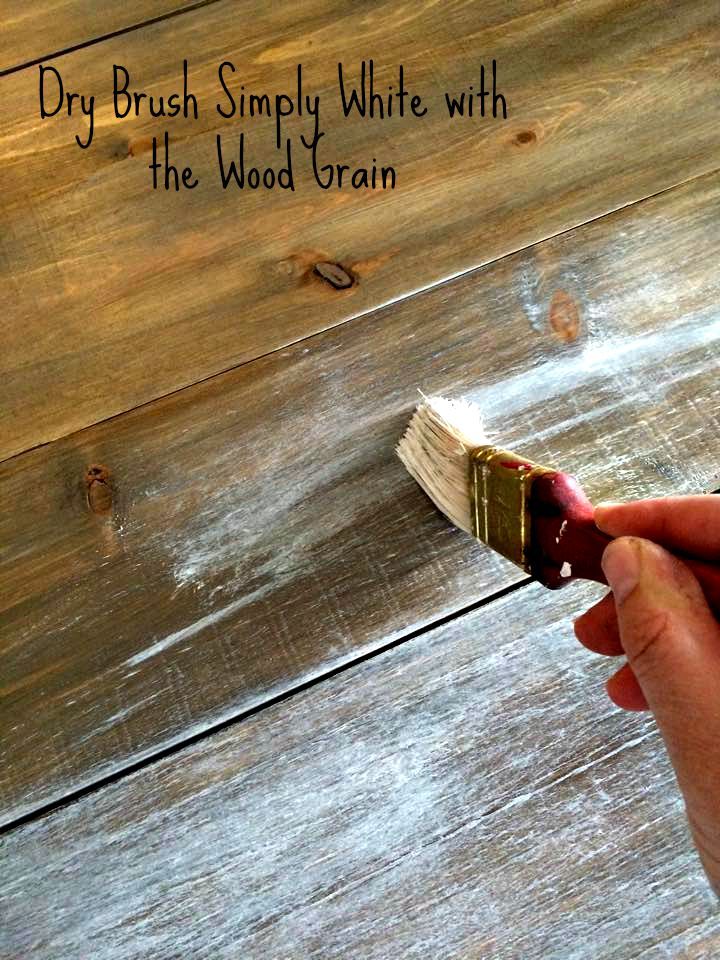
How to care for painted furniture
Painted furniture fronts require little maintenance. You need to remember what you can not use categorically:
- all types of solvents;
- cleaners containing abrasives;
- hard jaws.
In order to clean the painted furniture from dust and dirt, any foaming detergents, polishes with wax, products containing alcohol are suitable. The room where the painted furniture is located should not be too humid and hot.
Care for painted wooden furniture with polish and wax.
Restoring furniture with your own hands is not so difficult, the main thing is to approach the process thoroughly. Based on the features of the furniture, where and how it is used and your wishes for the result, it will not be difficult to make a choice of paint. Then, following the recommendations, boldly proceed to the execution of the plan.
Video: How can you repaint old furniture white?
Do-it-yourself furniture restoration: restoration of wood, polishing, veneer
Has old furniture lost its former gloss? I'm tired, but it's a pity to throw it away? All this is fixable: you can improve the appearance so that no one will think that the furniture is many years old. Do-it-yourself furniture restoration is hard work. But you don't have to do anything super complicated. Some methods are so simple that everyone can do it (we are not talking about antiques, of course).
Contents of the article
Restoration of wooden surfaces
No matter how carefully the furniture is handled, scuffs, scratches, stains still occur. They are easy to eliminate. The main thing is to know how and why.
- If the wood surface just lost its gloss, look for a wood care product that contains orange oil.
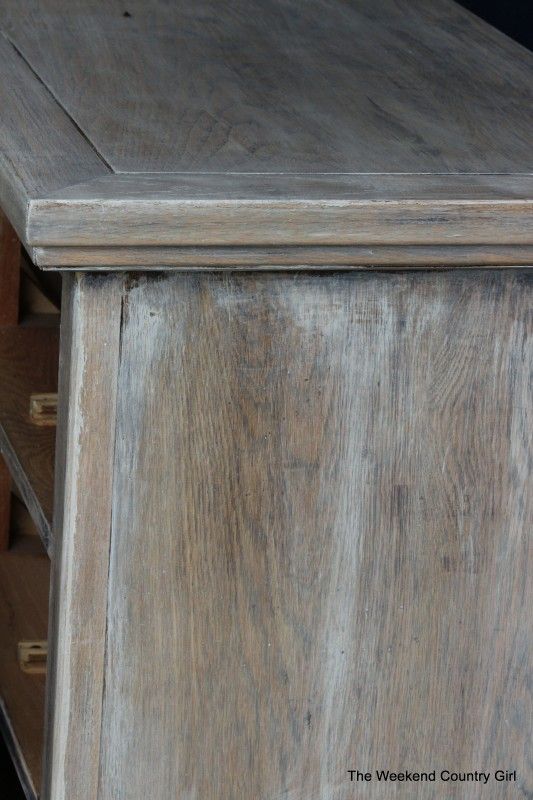 Take a clean sponge, moisten it slightly and heat it in the microwave for 20-30 seconds. Spraying the product from a spray bottle, then wipe it with a hot sponge (hands should be in rubber gloves coated inside).
Take a clean sponge, moisten it slightly and heat it in the microwave for 20-30 seconds. Spraying the product from a spray bottle, then wipe it with a hot sponge (hands should be in rubber gloves coated inside). Hot sponge and orange oil will restore the gloss of wooden furniture
- If there are scuffs, stains on the wood, you can try to cope with them by rubbing with a banana skin. Helps with minor injuries.
- More serious stains require serious action. These are retouching markers (available in stores selling furniture fittings), denatured alcohol and wax. First, clean the surface (dish detergent diluted in water is the best solution). We wipe the wood that has dried up after cleansing with alcohol: three brightened places are well moistened with a swab. In most cases, the color is restored. In deep scratches, alcohol does not restore color, they are painted over with a marker of a suitable color. To add shine, the surface is covered with wax and polished with a soft cloth.
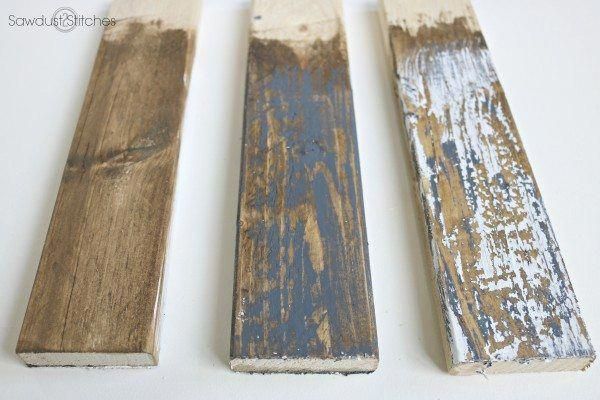
These transformations are possible using a marker, alcohol and wax
- If small irregularities need to be evened out, a nail file can be used. With scrupulous work, it is easier to wield with it than with sandpaper.
- If the wood is locally swollen from moisture: a leaking vessel is placed, you can quickly get rid of the defect and neutralize its consequences by mixing salt and olive oil. The gruel is applied to the damage and rubbed in a circular motion. Leave for 20-30 minutes. Salt will draw out the water, and olive oil will restore elasticity to the fibers.
- If there are chips, putty is indispensable. Suitable for both special for wood and automotive. The best way is to buy a light one and add color to it as needed. The chip is smeared over, a little putty is smeared on the adjacent surface. After drying, everything is well leveled with fine-grained sandpaper.
You might be interested in reading what wall shelves are (with drawings).
Restoring the polish
Restoring the lacquer layer is a difficult task. Any restoration of furniture begins with cleaning and degreasing and repairing the varnish coating too. We use dish detergent diluted in water: safe and reliable. After drying, we proceed to update the polishing.
You can simply freshen up faded polish on furniture with homemade mixtures:
- Two parts linseed oil and turpentine and a part vinegar. Everything is mixed, applied with a swab, wait until it is absorbed and polished.
- Mix oil and beer in equal parts and wipe the furniture with this compound. Rub after soaking.
- A more shiny surface will be if the beer is boiled with a piece of wax, cooled and applied slightly warm to the furniture. When the composition is absorbed, the surface is rubbed to a shine.
More recipes in the video.
How to remove polish from furniture
You have to remove polish quite often: it's not the most fashionable finish.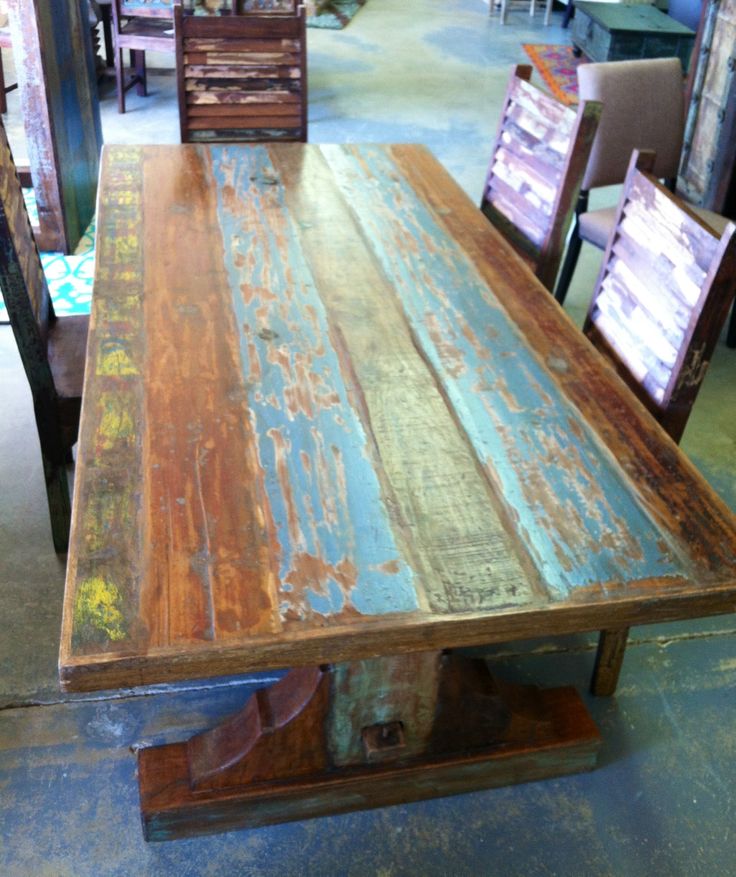 Modern furniture is most often painted with opaque or tinted paints, and the surface is matte. In any case, you need to remove the polish. There are several ways. Since varnishes are different in composition, you have to select empirically. But one of the methods should work.
Modern furniture is most often painted with opaque or tinted paints, and the surface is matte. In any case, you need to remove the polish. There are several ways. Since varnishes are different in composition, you have to select empirically. But one of the methods should work.
- Old polish can be removed mechanically from furniture. If there is a grinder, the process will go faster, if not, take sandpaper with a large grain and peel off the varnish layer until wood appears. Then take a fine grain and grind to a flat surface. Mechanical removal does not always work. Sometimes even a grinder does not work: the polish does not peel off, but begins to melt and stink. Then they change tactics.
- You will need a piece of old glass. Put on gloves and break it into several fragments. With the sharp edges that have formed, brush off the coating to the wood. If there are chamfers and recesses, it is convenient to scrape them with sharp edges. After the main layer of polishing is removed, everything is brought to a smooth state with fine-grained sandpaper.

Do-it-yourself furniture restoration often requires tough measures: some types of polish can only be scraped off with glass
- If working with glass does not appeal to you, there are chemical methods. There are ready-made polish removers. You can work with them either in the open air or in a draft: the fumes are harmful. How to remove polish - you need to read on the package. The means are different and the duration and order of processing may vary.
How to paint polished furniture
If old furniture is to be painted, it must be dusted, wiped with a damp cloth and allowed to dry. After leveling everything with putty, smooth out all the bumps, wait until it dries. Take sandpaper and sand again, first with medium, then with fine grain. Next, apply a layer of primer and wait for it to dry.
Applying varnish with a brush when restoring the polish of furniture A primer is bought to match the paint that is going to be used, or the paint can be diluted with a compatible thinner and covered instead of a primer.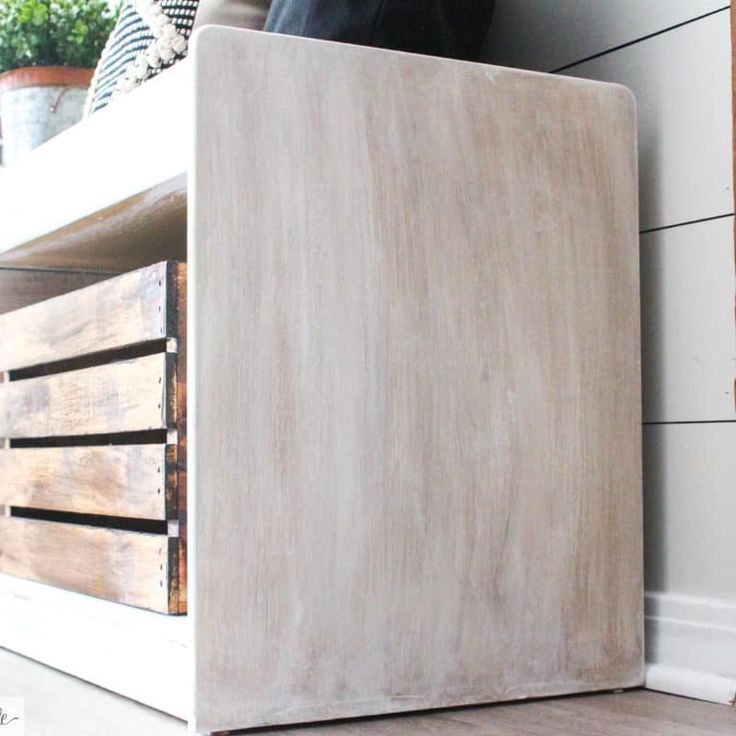 After drying, you can paint.
After drying, you can paint.
Can be painted with roller or brush. Usually several coats are needed: do not try to apply a lot of paint at once, as streaks may appear. It is better to apply several thin layers. So the surface will be smooth and uniform. Another trick: for uniform coloring, layers are applied in different directions - along, then across. This also applies to the application of varnish.
Some varnishes are easier to work with when they are warm. They are slightly heated and then applied with a spray gun or brush. When warming up, you need to be careful: vapors can flare up.
In order of painting: first paint the inner surfaces, edges and joints, then move on to the outer ones. With this sequence, there is less chance of getting dirty or touching the already painted surface, ruining it.
If the lacquer is smooth and free from defects and needs to be painted over, this layer can be dispensed with. There are special primers for difficult surfaces. Coat the surface with them, and paint after drying. They have components that penetrate even the varnish layer. Therefore, the paint will be applied well and hold on for a long time. But such soils have a minus: they are expensive. But they do save a lot of time.
Coat the surface with them, and paint after drying. They have components that penetrate even the varnish layer. Therefore, the paint will be applied well and hold on for a long time. But such soils have a minus: they are expensive. But they do save a lot of time.
Some secrets of coloring wood (including brushing and coloring in two colors) are in the article "How to paint a lining". See the video for a few secrets of even application of acrylic paint.
If the restoration did not bring the expected result, maybe you need to change the appearance? How to remake furniture in a new way is described here.
How to restore veneer
Veneered furniture requires a special approach. The means are basically the same, the methods are different. For example, if after hitting the veneer is swollen, draw PVA glue into a disposable syringe, pierce the bubble, and inject glue into the cavity. Lay a piece of dense fabric on top and put a load. If the surface is uneven (convex or concave), a bag of dense fabric with heated sand is used as a load.
Lay a piece of dense fabric on top and put a load. If the surface is uneven (convex or concave), a bag of dense fabric with heated sand is used as a load.
If the veneer is glued with alcohol glue, you can return the swollen part to its place by ironing it through a rag with a hot iron. But do not overheat the iron: the veneer can stretch. The degree of heating is medium.
If ironing with a dry cloth does not help, try again with a damp cloth (moisten and wring it out well). There is a chance that the wood will swell and become more elastic. To securely fix the swelling, you can introduce PVA there, and then heat it with an iron.
If the swelling is cracked, you can also try to seal it with heating (through a rag). If it does not work, tear off the exfoliated piece. You don’t cut it off, but break it off: on the veneer, the fractures after restoration are less noticeable than the cuts. Therefore, you break off the lagging piece. The old glue is removed from the place of damage and a piece of veneer (with sandpaper or nail files - depending on the size). Further, the repair of veneer on furniture is standard: they smeared it with PVA glue, laid it, aligning the fault lines, laid a thick fabric on top and put the load to dry.
Therefore, you break off the lagging piece. The old glue is removed from the place of damage and a piece of veneer (with sandpaper or nail files - depending on the size). Further, the repair of veneer on furniture is standard: they smeared it with PVA glue, laid it, aligning the fault lines, laid a thick fabric on top and put the load to dry.
Scratches and traces of restoration on veneer are removed in the same way as on wood: they are painted over with a furniture marker of a suitable shade. If the scratch is deep, a little molten wax for furniture restoration is applied to it (with a spatula). After drying, the wax is rubbed, if necessary, fine-grained sandpaper is used, but after such processing, the restored piece is covered with a layer of varnish.
Do-it-yourself furniture restoration requires patience and accuracy. We have to act gradually and methodically: smeared, waiting for drying, leveled, smeared again, etc.